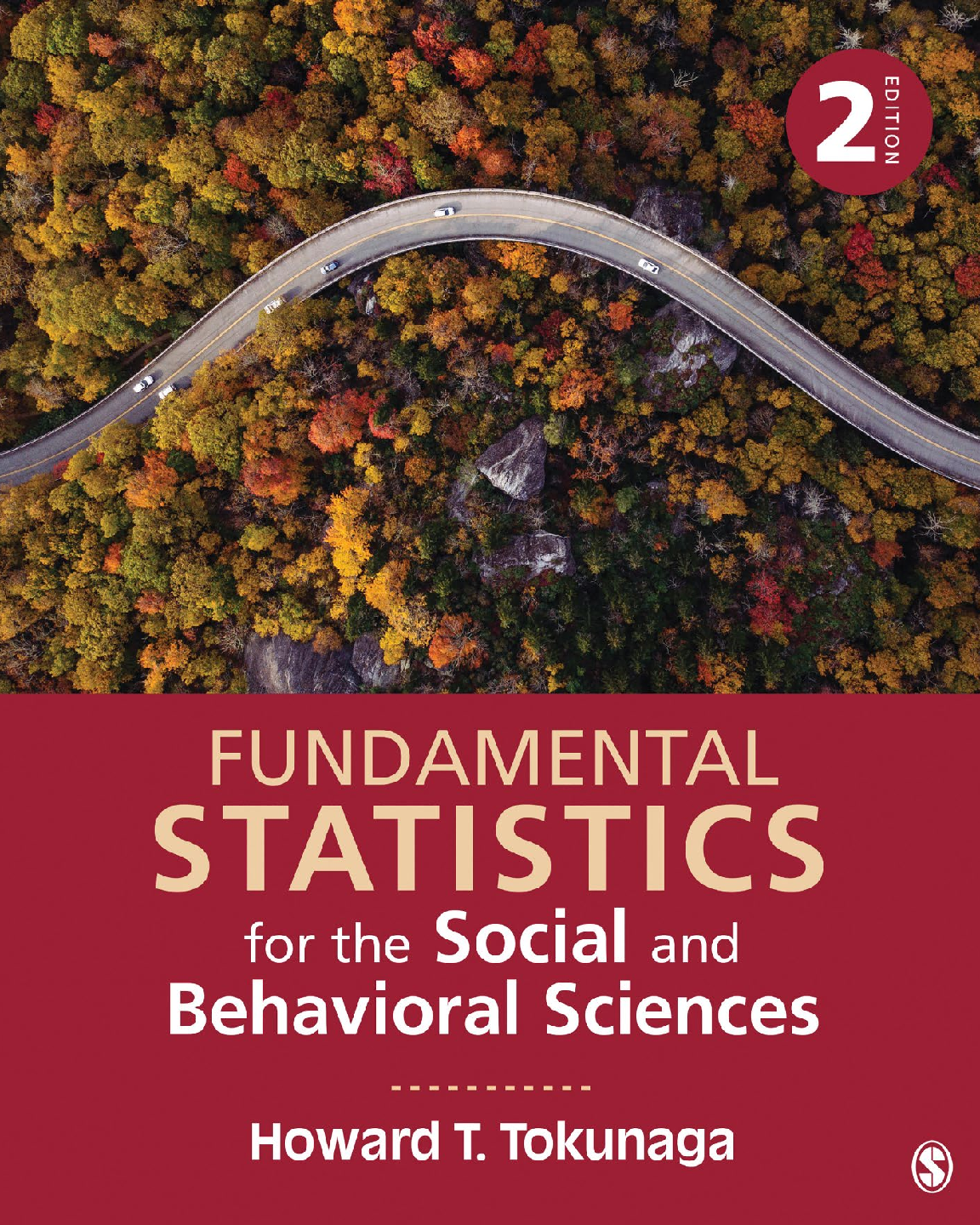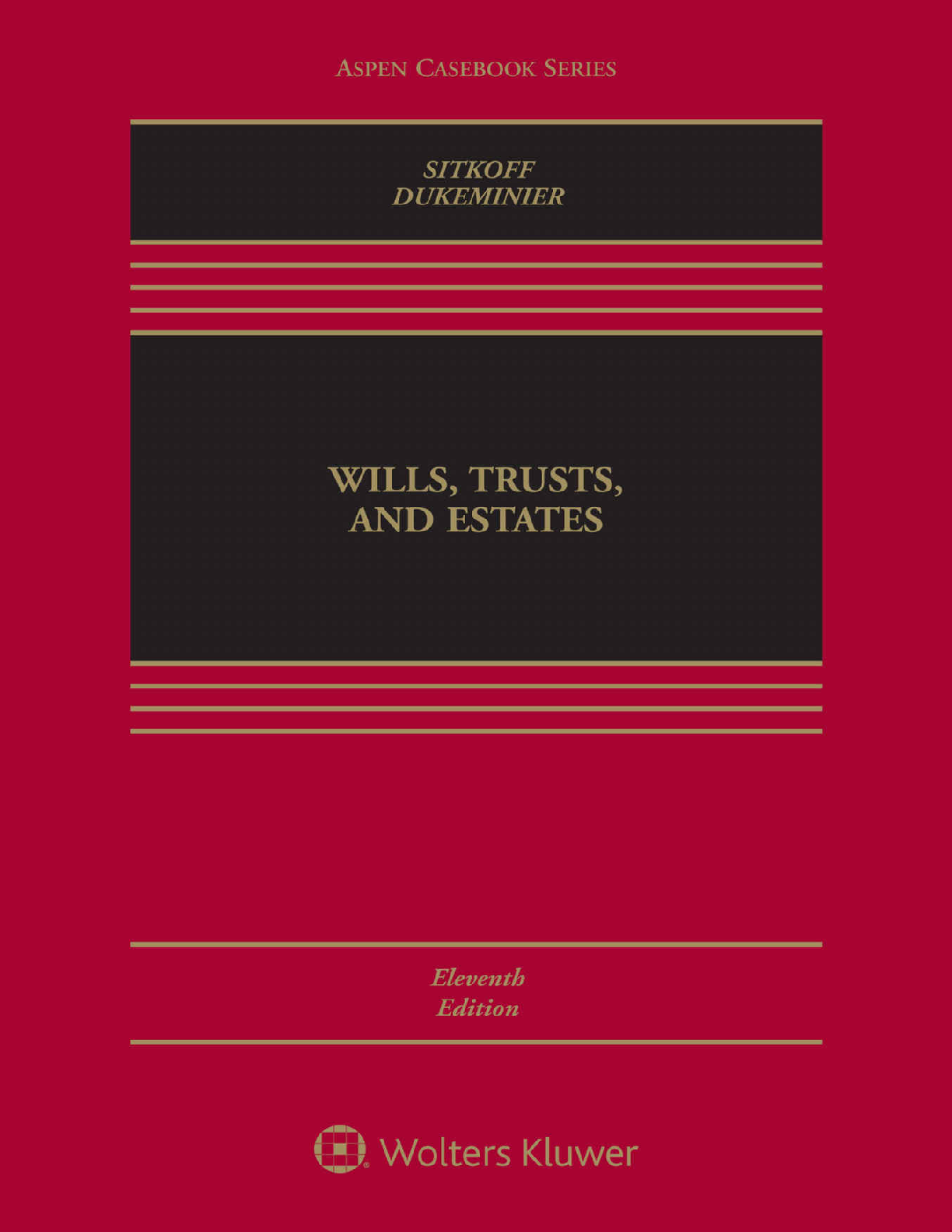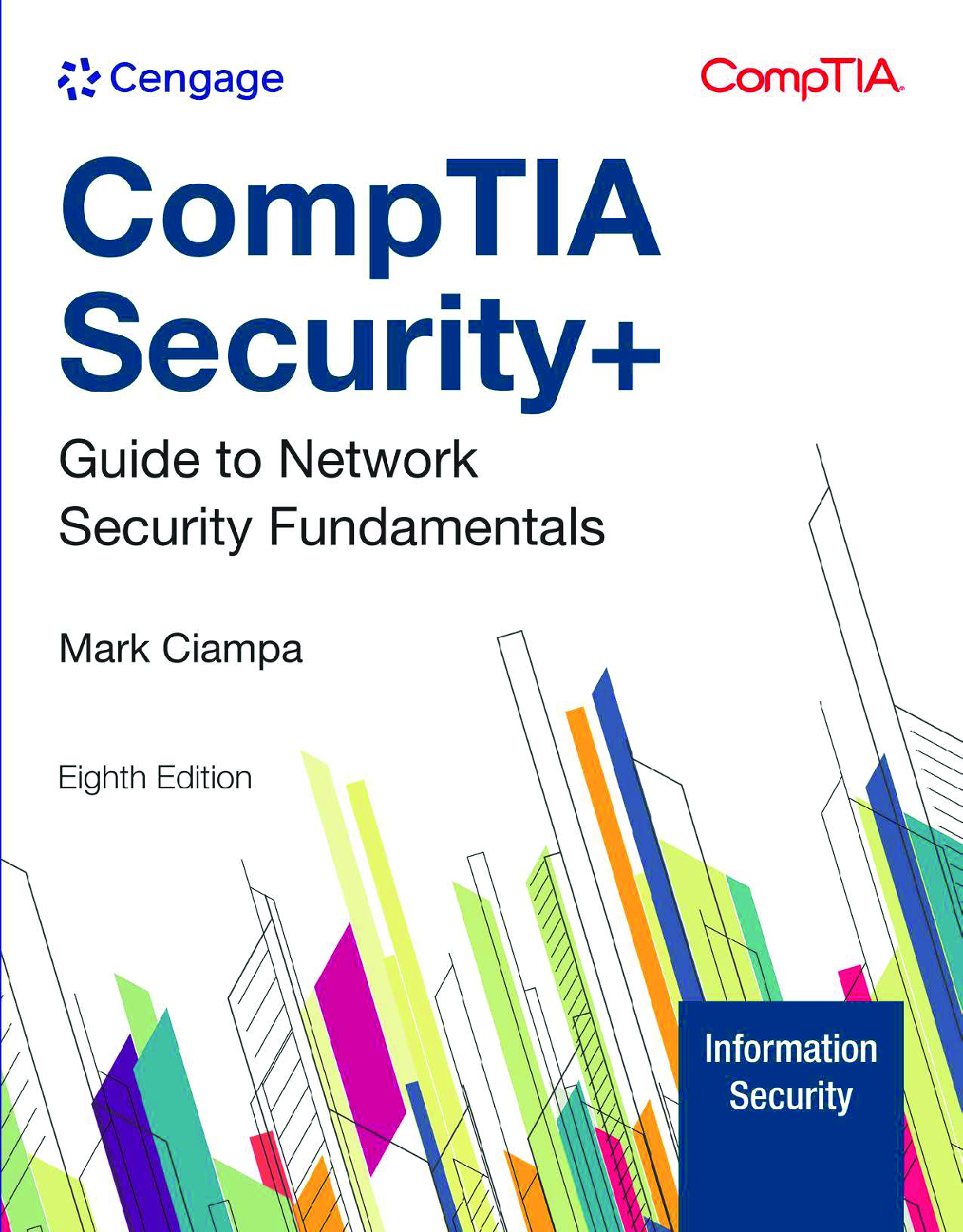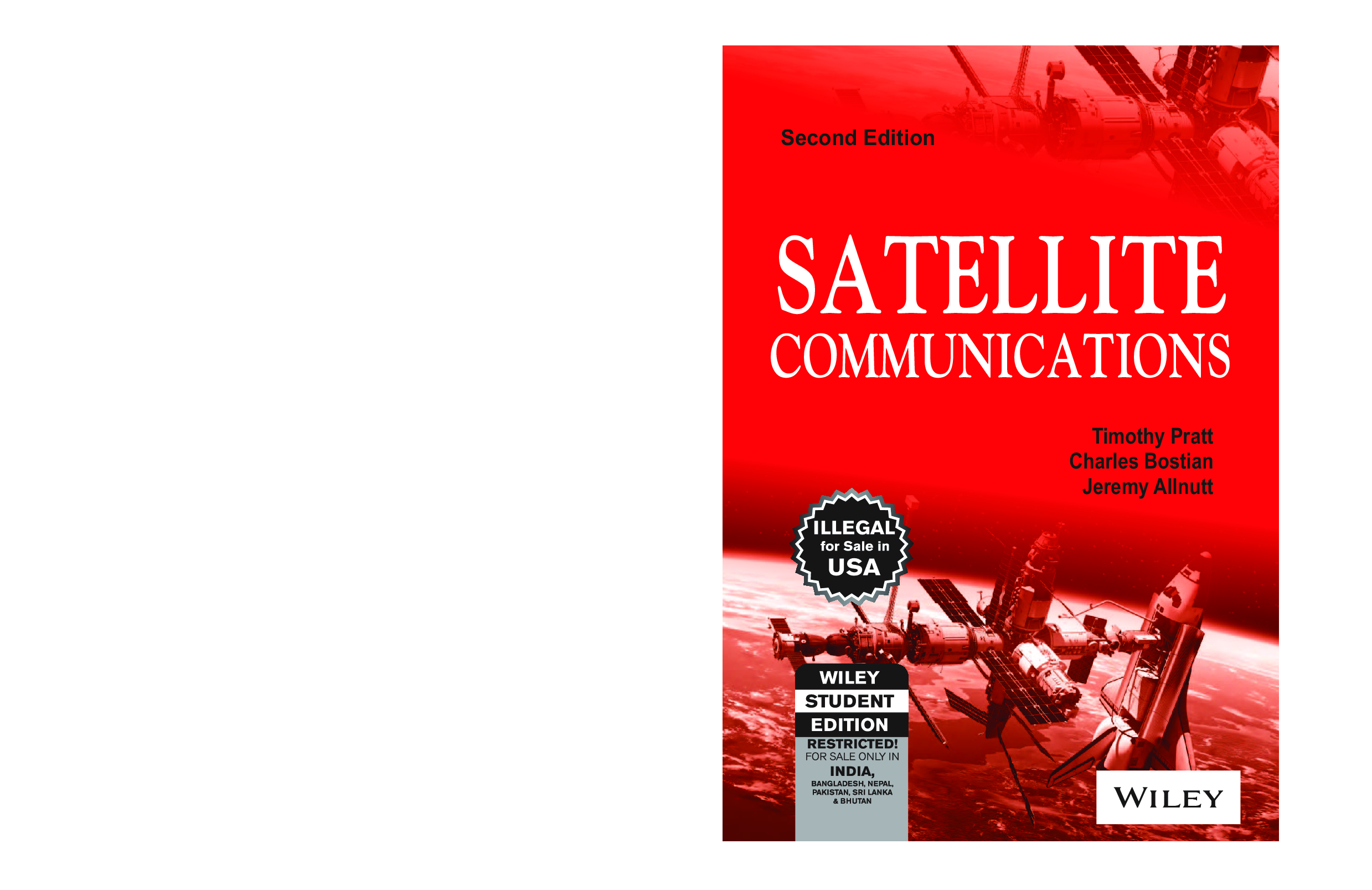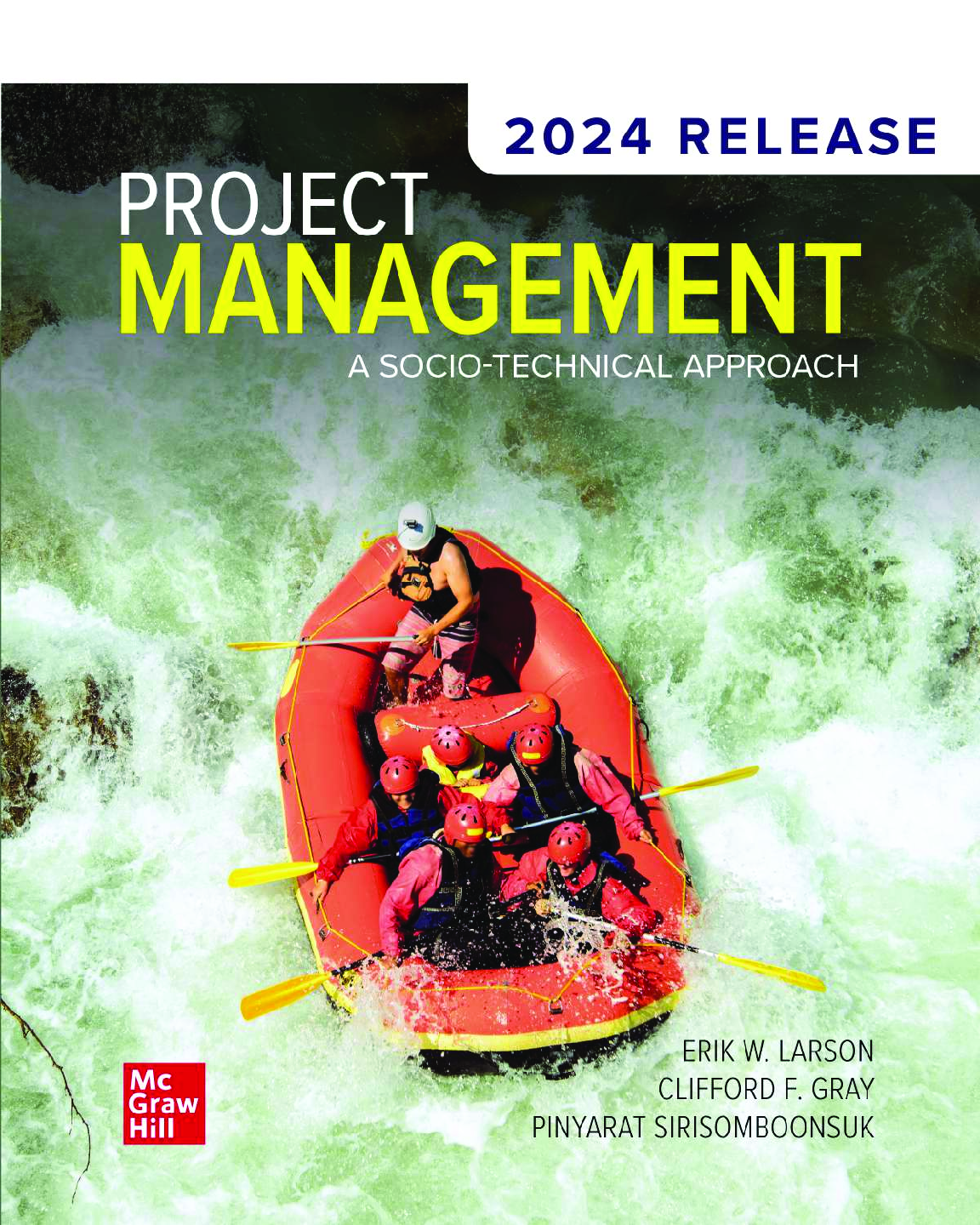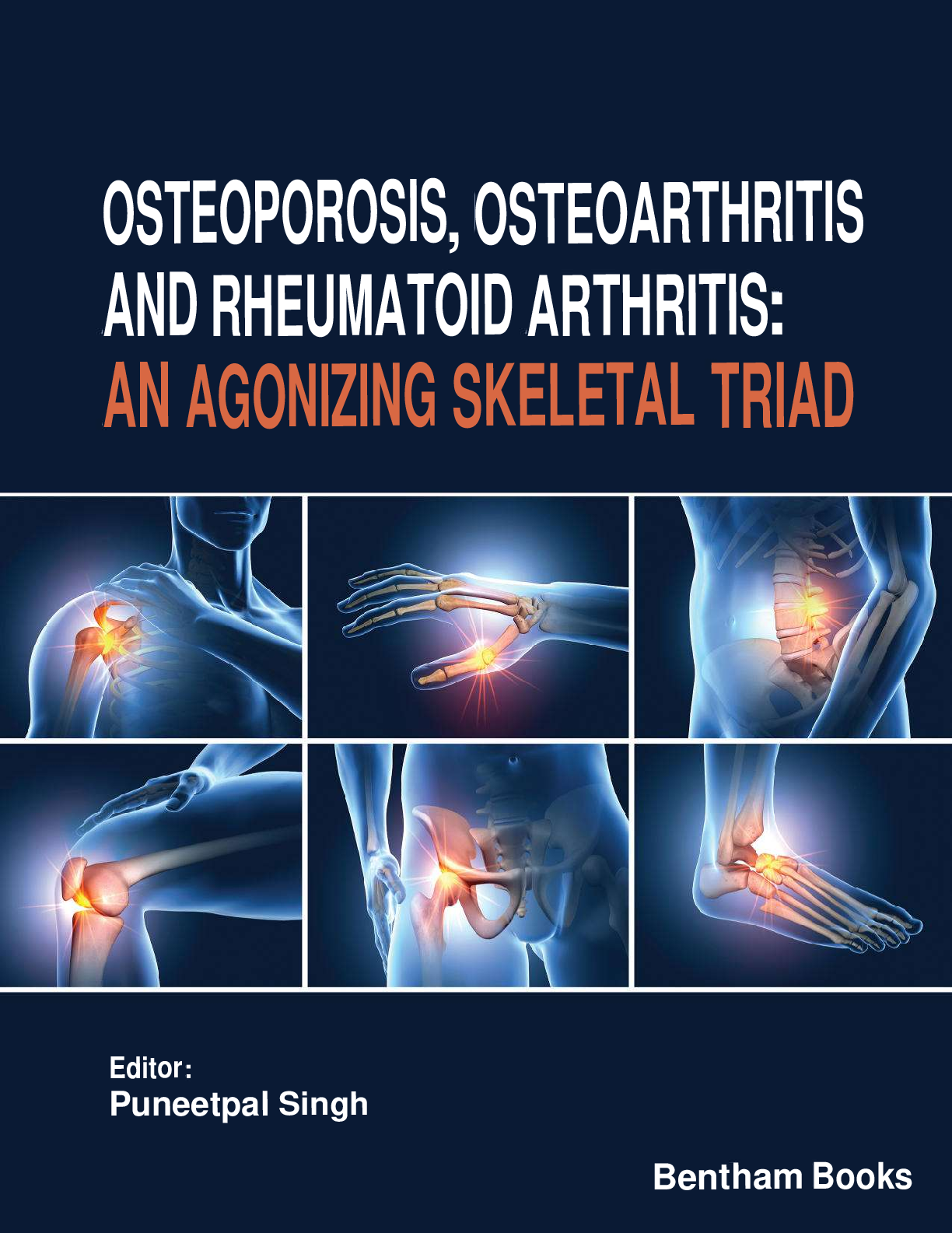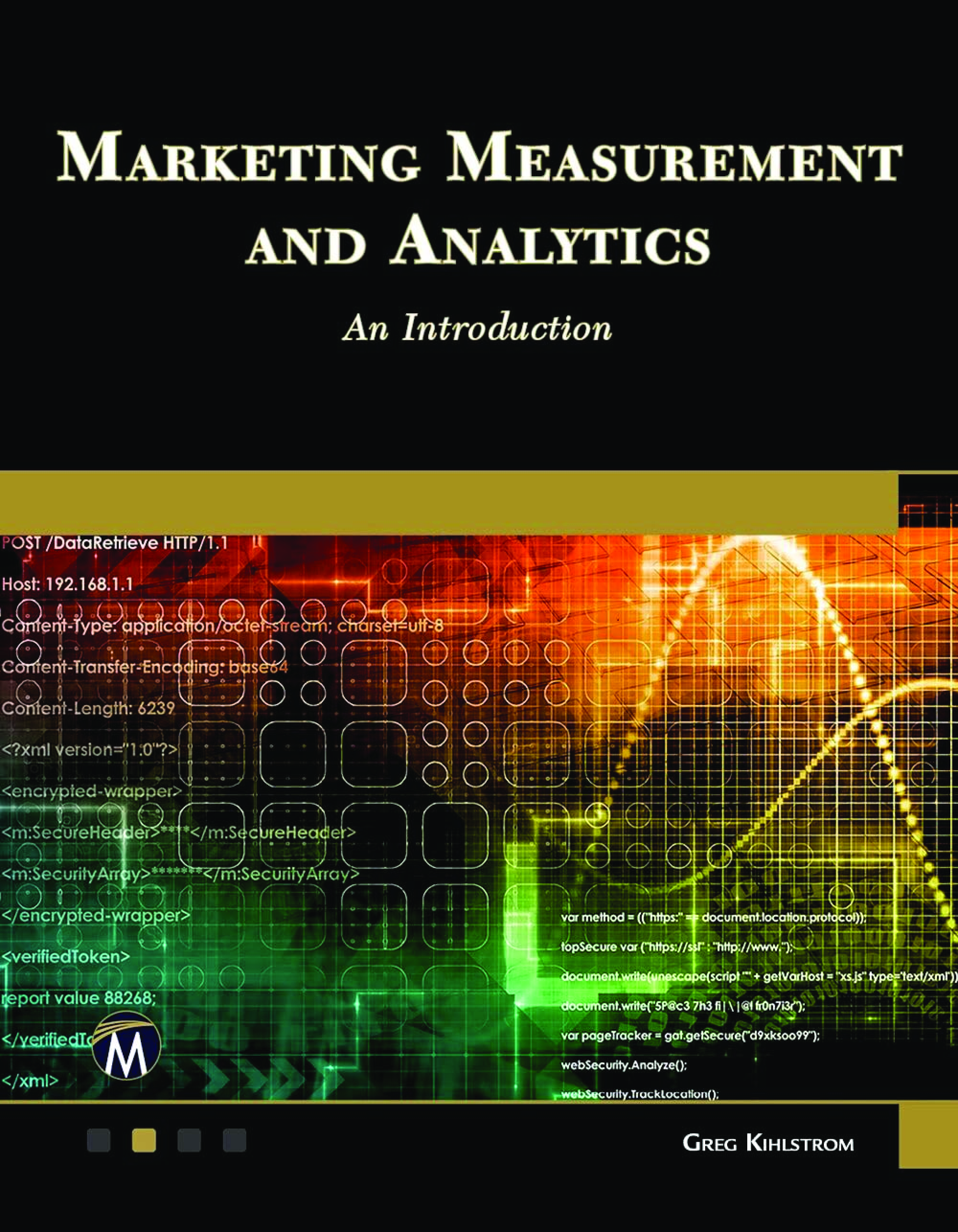Industrial Chemistry > eBook-PDF > eBook for Industrial Maintenance, 2nd Edition By Michael E. Brumbach, Jeffrey A. Clade (All)
eBook for Industrial Maintenance, 2nd Edition By Michael E. Brumbach, Jeffrey A. Clade
Document Content and Description Below
eBook for Industrial Maintenance, 2nd Edition By Michael E. Brumbach, Jeffrey A. Clade Get all 31 Chapters eBook PDF. TEXT LAYOUT Section 1: General Knowledge Section 2: Mechanical Knowledge ... Section 3: Electrical Knowledge Section 4: Welding Knowledge Section 5: Preventive Maintenance SECTION AND CHAPTER FEATURES TEXT SUPPLEMENT PACKAGE Student Companion Website INSTRUCTOR SITE Accessing an Instructor Companion Web site site from SSO Front Door New Users INDUSTRIAL MAINTENANCE SYLLABUS COMPETENCIES Section 1: General Knowledge Section 2: Mechanical Knowledge Section 3: Electrical Knowledge Section 4: Welding Knowledge Section 5: Preventive Maintenance ABOUT THE AUTHORS MICHAEL E. BRUMBACH JEFFREY (JC) CLADE ACKNOWLEDGMENTS FROM MIKE BRUMBACH FROM JC CLADE SECTION 1 GENERAL KNOWLEDGE CHAPTER 1 Safety 1-1 WORKPLACE SAFETY Work Environment Personal Protective Equipment Foot Protection Head Protection Protective Outer Wear Hand Protection FIGURE 1-1 (A) Improper way to wear a hardhat. (B) Proper way to wear a hardhat. Hearing Protection FIGURE 1-2 Earplugs. Eye Protection Cold Weather PPE FIGURE 1-3 Disposable side shields for prescription glasses. Appearance Pinch Points Lifting FIGURE 1-4 Proper footing for lifting. Securing the Area Electrical Safety General Electrical Safety Precautions Lockout/Tagout FIGURE 1-5 Multilock hasp. FIGURE 1-6 Tag used for the tagout procedure. The Buddy System Safety Concerns before Starting the Work FIGURE 1-7 Lockout cabinet. Worker Safety Personal Protective Equipment Scaffolds and Ladders Portable Hand and Power Tools Working on and around Electrical Circuits Grounding Switches Fuses and Disconnects Motors Capacitors Test Equipment 1-2 HAZARDOUS MATERIAL HANDLING The NFPA 704 Standard FIGURE 1-8 NFPA Standards 704. FIGURE 1-9 This symbol shows that a material is reactive to water. FIGURE 1-10 This is an example of the NFPA standards hazard identification system in use. FIGURE 1-11 This symbol shows that a material is a radiation hazard. The Hazardous Material Information Guide The Material Safety Data Sheet FIGURE 1-12 The Hazardous Material Information Guide (HMIG). FIGURE 1-13 Recommended personal protective equipment (PPE) in the HMIG. Fire Safety FIGURE 1-14 An example of a Material Safety Data Sheet (MSDS). FIGURE 1-15 MSDS Data Sheet Compliance Center. Fire Classifications FIGURE 1-16 Fire symbols. Extinguisher Use 1-3 LADDERS AND SCAFFOLDS Ladders FIGURE 1-17 Extension ladder components. FIGURE 1-18 Extension ladder end caps. Scaffolds FIGURE 1-19 Proper ladder setup. FIGURE 1-20 Pole scaffolding. SUMMARY REVIEW QUESTIONS CHAPTER 2 Tools 2-1 HAND TOOLS Wrenches Open End Wrenches FIGURE 2-1 Open-end wrench. Box-End Wrenches FIGURE 2-2 Box-end wrench, 12 point. Combination Wrenches FIGURE 2-3 Box-end wrench, 6 point and 12 point. FIGURE 2-4 Combination wrench offset 15°. Adjustable Wrenches FIGURE 2-5 Adjustable wrench. FIGURE 2-6 The proper adjustment of an adjustable wrench against the flats of a bolt. FIGURE 2-7 The improper adjustment of an adjustable wrench against the flats of a bolt. Flare Nut Wrenches FIGURE 2-8 Rounded corners due to the improper use of an adjustable wrench. FIGURE 2-9 Flare nut wrench. Socket Wrenches FIGURE 2-10 Ratchet. FIGURE 2-11 Flexible head ratchet Torque Wrenches FIGURE 2-12 Flexible head breaker-bar. Notice the 12 in. ruler beside the breaker-bar. FIGURE 2-13 Micrometer torque wrench (left) and deflecting beam torque wrench (right). FIGURE 2-14 ¼ in. ratchet. Screwdrivers Stubby Screwdrivers FIGURE 2-15 Stubby screwdrivers. Notice that they are each about 3 in. long. FIGURE 2-16 Square-shank screwdriver. Square-Shank Screwdrivers FIGURE 2-17 Round-shank screwdriver with flats at top of shank. Round-Shank Screwdrivers Holding Screwdrivers Magnetic Screwdrivers Offset Screwdrivers FIGURE 2-18 Offset screwdriver. Ratcheting Screwdrivers Pliers Linemen's Pliers FIGURE 2-19 Electrician's lineman's pliers (bottom) and Ironworker's pliers (top). Long-Nose Pliers Diagonal Cutting Pliers FIGURE 2-20 Straight-nose and curved-nose needle nose pliers. Slip Joint Pliers Tongue and Groove Pliers FIGURE 2-21 Slip-joint pliers. FIGURE 2-22 Channel Lock®. Locking Plier-Wrenches FIGURE 2-23 Various types of locking pliers. Hammers FIGURE 2-24 Ball-peen hammer. Chisels, Punches, and Files Chisels Punches Files FIGURE 2-25 Center punch (top) and drift punch (bottom). FIGURE 2-26 File cuts. FIGURE 2-27 File parts. FIGURE 2-28 File shapes. These shapes represent what the file looks like as you are looking at the point of the file. The Hacksaw FIGURE 2-29 Hacksaw blade teeth sets. 2-2 MEASURING DEVICES FIGURE 2-30 How to read a ruler. The Rule The Folding Rule The Steel Tape FIGURE 2-31 Smallest ruler increment indication. FIGURE 2-32 Metric ruler. FIGURE 2-33 Folding ruler. FIGURE 2-34 Steel tape. 2-3 POWER TOOLS Portable Drill FIGURE 2-35 Keyed chuck (right) and keyless chuck (left). The Portable Bandsaw FIGURE 2-36 Stationary band saw. FIGURE 2-37 Portable band saw (“Port-a-band”). The Reciprocating Saw The Right-Angle Grinder FIGURE 2-38 (A) Guard on grinder. (B) Guard missing. The Circular Saw SUMMARY REVIEW QUESTIONS CHAPTER 3 Fasteners 3-1 THREADS Thread Construction FIGURE 3-1 Thread specifications. FIGURE 3-2 This fastener has 12 threads per in. Table 3-1 SCREW THREADS PER INCH FOR COMMON DIAMETERS Thread Series Thread Diameter FIGURE 3-3 Contact on the face of a thread. FIGURE 3-4 Major and minor diameters of a bolt and a nut. Thread Class Fastener Specifications Metric Threads FIGURE 3-5 Pitch diameter. Table 3-2 M-PROFILE COARSE 1-1 PITCH THREADS Table 3-3 M-PROFILE FINE-PITCH THREADS 3-2 TAPS AND DIES Taps Tap Construction FIGURE 3-6 T-handle tap wrenches. Tap handles tighten against the flats on the tap. FIGURE 3-7 Lands and flutes on a tap. Tap Selection FIGURE 3-8 Relation of drill bit and thread. Table 3-4 DRILL AND TAP CHART FOR COARSE THREAD AND FINE THREAD FASTENERS (STANDARD) Tapping Procedures Table 3-5 DRILL AND TAP CHART (METRIC) FIGURE 3-9 Three types of tap. FIGURE 3-10 Helicoil inserts. FIGURE 3-11 Lands and flutes on a die. Dies 3-3 FASTENER TYPES Threaded Fasteners Bolts and Screws Threaded Studs Double-Ended Studs FIGURE 3-12 Double-ended stud. Pin Fasteners FIGURE 3-13 Cotter pin. 3-4 FASTENER GRADES FIGURE 3-14 Fastener grade head markings (standard). FIGURE 3-15 Fastener grade materials (standard). 3-5 TORQUE SPECIFICATIONS FIGURE 3-16 Fastener head markings (metric). FIGURE 3-17 Fastener grades (metric). Standard Torque Specifications Table 3-6 TORQUE SPECIFICATIONS (STANDARD) Table 3-7 TORQUE DEDUCTIONS Metric Torque Specifications 3-6 RETAINING RING FASTENERS FIGURE 3-18 Internal snap ring (left) and external snap ring (right). Table 3-8 TORQUE SPECIFICATIONS (METRIC) FIGURE 3-19 E-clip. FIGURE 3-20 Various e-clips. SUMMARY REVIEW QUESTIONS CHAPTER 4 Industrial Print Reading 4-1 MECHANICAL DRAWINGS Dimensional Drawings Schematics FIGURE 4-1 Dimensional drawing of a bracket. FIGURE 4-2 Three-dimensional drawing of the bracket in Figure 4-1. FIGURE 4-3 Hydraulic schematic. Exploded View Drawings FIGURE 4-4 Exploded view of a gear shifter. Title Blocks 4-2 PIPING SYMBOLS AND DRAWINGS FIGURE 4-5 Title block. FIGURE 4-6 A comparison of an isometric sketch and an orthographic sketch. FIGURE 4-7 Common piping symbols. FIGURE 4-8 Piping sketch dimensions. 4-3 HYDRAULIC/PNEUMATIC SYMBOLS AND DRAWINGS Fluid Power Symbol FIGURE 4-9 ANSI symbols for fluid power. FIGURE 4-10 ANSI symbols showing the different actuating methods. FIGURE 4-11 Hydraulic schematic. FIGURE 4-12 Locating a component in a schematic. 4-4 ELECTRICAL SYMBOLS AND DRAWINGS FIGURE 4-13 Symbols for power sources and grounds. FIGURE 4-14 Symbols for overcurrent protective devices. FIGURE 4-15 Symbols of various switching arrangements. FIGURE 4-16 Symbols for manual switches. FIGURE 4-17 Symbols for automatic switches. FIGURE 4-18 Symbols for contacts, relays, motor starters, motors, and generators. FIGURE 4-19 Symbols for resistors and capacitors. FIGURE 4-20 Symbols for inductors and transformers. Single-Line Drawings FIGURE 4-21A Symbols for various solid-state devices (Part 1). FIGURE 4-21B Symbols for various solid-state devices (Part 2). FIGURE 4-22 Symbols for integrated circuits and digital logic gates. FIGURE 4-23 Single-line drawing. Pictorial Diagrams FIGURE 4-24A Pictorial diagram: (A) front view of the cover of a control box. FIGURE 4-24B (B) Same control box with the cover opened. Schematic Diagrams Ladder Diagrams FIGURE 4-25 Schematic diagram of the forward-reverse control circuit shown in Figure 4-24. FIGURE 4-26 Ladder diagram. Using the Drawings and Diagrams 4-5 WELDING SYMBOLS AND DRAWINGS FIGURE 4-27 ANSI welding symbols. FIGURE 4-28 ANSI symbols indicating the location of a weld, method of welding, and contour of the weld. FIGURE 4-29 ANSI supplemental symbols. FIGURE 4-30 ANSI symbols for finish, groove, and angle. FIGURE 4-31 An example of a simple welding schematic. FIGURE 4-32 Welding a fillet: four welds, 2 in. long, 5 in. from center to center. FIGURE 4-33 Welds 9 and 10. FIGURE 4-34 Field welds. SUMMARY REVIEW QUESTIONS CHAPTER 5 Rigging and Mechanical Installations 5-1 FORMULAE AND WEIGHT ESTIMATIONS Units of Measure Table 5-1 UNITS OF MEASURE (LENGTH) Length Area FIGURE 5-1 Properties of the circle. FIGURE 5-2 Area of a circle and cylinder. Volume FIGURE 5-3 Area of the rectangle, square, or any other quadrilateral. Irregularly Shaped Objects FIGURE 5-4 Area of a trapezoid. FIGURE 5-5 Area of a triangle. Weight Estimation FIGURE 5-6 Surface area of a pyramid. FIGURE 5-7 Volume of a cube. FIGURE 5-8 Volume of a cylinder. FIGURE 5-9 Volume of a cone. FIGURE 5-10 Volume of a sphere. 5-2 LOAD BALANCING FIGURE 5-11 Volume of a prism. FIGURE 5-12 Leveling plate. Vertical Center of Gravity FIGURE 5-13 Identifying the regular shapes and dimensions on the irregularly shaped leveling plate. Center of Weight 5-3 SYNTHETIC SLINGS FIGURE 5-14 Calculating the total volume of the leveling plate. Sling Types Sling Terminology Table 5-2 MATERIAL WEIGHTS (LBS./FT3) FIGURE 5-15 A solid roller used in a pressing machine. FIGURE 5-16 Volume of the roller cylinder. FIGURE 5-17 Subtract the volume where the shaft is inserted. FIGURE 5-18 Volume of the shaft. FIGURE 5-19 Center of gravity. FIGURE 5-20 Center of weight. FIGURE 5-21 Angle of loading. Web Slings FIGURE 5-22 Web sling types. Web Sling Load Capacities FIGURE 5-23 Types of hitches. Round Sling Table 5-3a SYNTHETIC WEB SLING ANCLE LOSS FACTOR TABLE (NOT CHOKER HITCH) Table 5-3b SAFETY FACTOR OF WEB SLINGS WHEN USED AS A CHOKER HITCH FIGURE 5-24 Protection of web sling. Round Sling Load Capacities 5-4 FIBER ROPE AND SECURING FIGURE 5-25 Round sling safety indicators. Table 5-4 ROUND SLING LOAD CAPACITIES Types of Ropes FIGURE 5-26 Construction of natural rope. Rope Load Capacities Rope End Preparation FIGURE 5-27 Whipping. FIGURE 5-28 Making an eye splice in a rope. Securing Using Synthetic and Fiber Ropes FIGURE 5-29 Elements of a knot. FIGURE 5-30 Procedures for making the common types of bowline knots. FIGURE 5-31 Making the square knot. FIGURE 5-32 Making the sheep shank knot. FIGURE 5-33 Procedures for making many different types of hitch knots. Fiber Rope Strength 5-5 WIRE ROPE AND WIRE ROPE SLINGS Wire Rope Classification, Construction, and Sizes Classification Construction Size FIGURE 5-34 Wire rope lay types. Table 5-5 WIRE ROPE CLASSIFICATIONS Inspection FIGURE 5-35 Construction of filler type wire rope. FIGURE 5-36 Classifications and pattern types of the most commonly used wire rope. FIGURE 5-37 Proper method for acquiring the diameter of wire rope using a dial indicator. Table 5-6 MAXIMUM WEAR FOR WIRE ROPE Wire Rope Load Capacities Wire Rope Attachments FIGURE 5-38 The load/leg is increased as the angle of the hitch decreases. Table 5-7 HITCH (SLING) LEG LOADING FACTORS FIGURE 5-39 Correct clip spacing. Table 5-8 SPACING DIMENSIONS FOR WIRE ROPE CLIPS* FIGURE 5-40 Proper and improper clip installation. FIGURE 5-41 Proper installation of a wedge socket. 5-6 CHAIN AND CHAIN SLINGS Chain Sling Inspection FIGURE 5-42 Testing for chain elongation (stretching). Table 5-9 MINIMUM ALLOWABLE CHAIN SIZE AT ANY POINT OF LINK Chain Attachments FIGURE 5-43 Shackle types. FIGURE 5-44 Centering the shackle. FIGURE 5-45 The load capacity of a shackle is dependent upon the angle of loading. FIGURE 5-46 The chain sling and the master link. FIGURE 5-47 Hook Types. Chain Grades Chain Load Capacities FIGURE 5-48 An example of calculating UBS using (8 mm) Grade 800 (G80) chain. 5-7 PRELIFT PLANNING Inspect the Load Weight Determination Needed Personnel Determine Equipment and Inspect Determine the Path SUMMARY REVIEW QUESTIONS SECTION 2 MECHANICAL KNOWLEDGE CHAPTER 6 Mechanical Power Transmission 6-1 BELTS AND SHEAVES Flat Belts Belt Speed Calculations Flat Belt Tracking FIGURE 6-1 Flat belt pulley alignment. FIGURE 6-2 Flat belt tracking away from witness mark. Flat Belt Pulleys FIGURE 6-3 Flat belt tracking over witness mark. FIGURE 6-4 Cross section of straight crown and curved crown pulleys. V-Belts FIGURE 6-5 Belt deflection. FIGURE 6-6 Dimension comparisons (in inches) of V-belts. V-Belt Selection FIGURE 6-7 V-belt cogs. FIGURE 6-8 Tension members of a double V-belt and a standard V-belt. FIGURE 6-9 Dimensions (in inches) of double V-belts. FIGURE 6-10 Pitch diameter of pulley when V-belt is in pulley. V-Belt Maintenance Table 6-1 BELT PITCH LENGTHS (IN.) OF STANDARD V-BELTS FIGURE 6-11 Sheave wear. FIGURE 6-12 Belt and sheave wear guide. FIGURE 6-13 An example of a link belt. Positive-Drive Belts FIGURE 6-14 Positive-drive belt. Pulleys FIGURE 6-15 Tapered-bore pulley. 6-2 CHAINS AND SPROCKETS FIGURE 6-16 Various roller chains. Notice the pin link and the roller link at the top. FIGURE 6-17 Chain splitter. FIGURE 6-18 Offset link. Roller Chain Identification Silent Chain FIGURE 6-19 Silent chain. Ladder Chains Sprockets FIGURE 6-20 Five types of sprockets. 6-3 GEARS AND GEARBOXES Gear Pitch FIGURE 6-21 Pitch diameters of gears. FIGURE 6-22 Measured pitch diameter of a gear. Gear Ratio Backlash FIGURE 6-23 Backlash. The Spur Gear FIGURE 6-24 Spur gear. Bevel Gears FIGURE 6-25 Rack and pinion gear. FIGURE 6-26 Bevel gear set. Miter Gears Helical Gears Herringbone Gears FIGURE 6-27 Helical gear. FIGURE 6-28 Herringbone gear. Worm Gears FIGURE 6-29 Worm gear. Gearboxes FIGURE 6-30 Gearbox. 6-4 SPEED CALCULATIONS FIGURE 6-31 Speed calculation 1. FIGURE 6-32 Notice that the gears are touching. FIGURE 6-33 Speed calculation 2. FIGURE 6-34 Speed calculation 3. FIGURE 6-35 Gear rotation. FIGURE 6-36 Speed calculation 4. FIGURE 6-37 Speed calculation 5. FIGURE 6-38 Stacked gears that share the same shaft. FIGURE 6-39 1:1 gear ratio. SUMMARY REVIEW QUESTIONS FIGURE 6-40 Speed calculation 6. FIGURE 6-41 Speed calculation 7. CHAPTER 7 Bearings 7-1 BEARING LOADS 7-2 BEARING CONSTRUCTION FIGURE 7-1 Three types of bearing loads. FIGURE 7-2 Bearing retainer or separator. FIGURE 7-3 Sealed bearing. 7-3 SERIES OF BEARINGS FIGURE 7-4 Inner and outer race diameters. 7-4 BEARING TYPES Antifriction (Ball) Bearings Ball Bearing The Single-Row Ball Bearing The Double-Row Ball Bearing FIGURE 7-5 Single-row and double-row deep groove ball bearings. FIGURE 7-6 Radial-thrust ball bearing. Radial Thrust Ball Bearing The Ball-Thrust Bearing FIGURE 7-7 Back-to-back and face-to-face configurations. The Self-Aligning Ball Bearing FIGURE 7-8 Ball-thrust bearing. FIGURE 7-9 Self-aligning ball bearing. Roller Bearings Cylindrical Roller Bearing Spherical Roller Bearing FIGURE 7-10 Three types of cylindrical roller bearings. FIGURE 7-11 Double-row spherical roller bearing. The Taper Roller Bearing FIGURE 7-12 Taper roller bearing. FIGURE 7-13 Double-row tapered-roller bearing. Needle Bearing Plain Bearings FIGURE 7-14 Types of plain bearings. Synthetic Plain Bearings 7-5 BEARING INSTALLATION AND REMOVAL Bearing Installation FIGURE 7-15 Electric bearing heater. Bearing Removal FIGURE 7-16 Three types of bearing pullers. 7-6 BEARING FAILURES High Temperatures Moisture Contamination Improper Lubrication Misalignment Electric Current Flow through the Bearing Overloading or Excessive Thrust SUMMARY REVIEW QUESTIONS CHAPTER 8 Coupled Shaft Alignment 8-1 SHAFT ALIGNMENT Pulley and Sprocket Alignment FIGURE 8-1 Three types of pulley misalignment. Offset Misalignment Angular Misalignment Nonparallel Misalignment FIGURE 8-2 Pulley face alignment. Coupling Alignment Parallel Soft Foot Angular Soft Foot Springing Soft Foot Induced Soft Foot FIGURE 8-3 Coupling misalignments. FIGURE 8-4 Horizontal and vertical alignments. FIGURE 8-5 A flexible coupling flange. FIGURE 8-6 Vertical angular misalignment. FIGURE 8-7 Vertical offset misalignment. FIGURE 8-8 Horizontal angular misalignment. FIGURE 8-9 Using a straightedge to detect horizontal offset and horizontal angular misalignments. FIGURE 8-10 Use of jackscrews to correct for horizontal angular misalignment. FIGURE 8-11 Horizontal offset misalignment. FIGURE 8-12 Use of jackscrews to correct for horizontal offset misalignment. 8-2 DIAL INDICATOR METHOD FIGURE 8-13 Dial indicators. FIGURE 8-14 Rim and face dial indicator setup. FIGURE 8-15 Witness marks. FIGURE 8-16 Bar sag. FIGURE 8-17 Be sure to shim the correct motor feet. FIGURE 8-18 Jackscrews can help eliminate the horizontal angular misalignment. FIGURE 8-19 Use of dial indicators to determine the amount of correction to be made. 8-3 REVERSE DIAL INDICATOR METHOD FIGURE 8-20 Reverse dial indicator setup. 8-4 FEELER GAUGE METHOD FIGURE 8-21 A feeler gauge set. FIGURE 8-22 Taper gauge. FIGURE 8-23 Insert the feeler gauge between the flange and the straightedge. FIGURE 8-24 Jackscrews can help eliminate the horizontal angular misalignment. FIGURE 8-25 Dial caliper. 8-5 LASER SHAFT ALIGNMENT FIGURE 8-26 A laser alignment kit in use. FIGURE 8-27 Laser targeting is used to determine offset and angularity misalignments. SUMMARY REVIEW QUESTIONS CHAPTER 9 Lubrication 9-1 GENERAL TERMS 9-2 TYPES OF LUBRICANTS Film Lubrication FIGURE 9-1 Metal to metal with no lubrication. FIGURE 9-2 Metal to metal with film lubrication. 9-3 METHODS OF APPLICATION Submersion The Splash Method The Wick Method FIGURE 9-3 Two methods of submersion. FIGURE 9-4 Slinger lubricator. The Drip Method The Automatic Oiler System FIGURE 9-5 The wick method. FIGURE 9-6 The drip method. FIGURE 9-7 Simalube lubricator. Methods of Grease Application FIGURE 9-8 Grease block application. Boundary Lubrication FIGURE 9-9 Boundary lubrication. 9-4 LUBRICATION SCHEDULES SUMMARY REVIEW QUESTIONS CHAPTER 10 Seals and Packing 10-1 PACKING SEALS Packing Material Packing Seal Parts and Assemblies FIGURE 10-1 A lantern ring allows the packing material to be lubricated by external means. FIGURE 10-2 An improper method of cutting packing material. Installation FIGURE 10-3 Alternate the splices. 10-2 MECHANICAL SEALS FIGURE 10-4 An inside mechanical seal. FIGURE 10-5 An outside mechanical seal. FIGURE 10-6 A double mechanical seal. FIGURE 10-7 Mechanical squeeze. 10-3 RADIAL LIP SEALS FIGURE 10-8 Cross sections of two single-element radial lip seals. SUMMARY REVIEW QUESTIONS CHAPTER 11 Pumps and Compressors 11-1 HYDRAULIC PUMPS Vane Pumps Fixed Displacement Vane Pump FIGURE 11-1 A fixed displacement vane pump. Variable Displacement Vane Pump FIGURE 11-2 A variable displacement vane pump. Balanced Vane Pump FIGURE 11-3 A balanced vane pump. Gear Pumps External Gear Pump FIGURE 11-4 An external gear, or gear-on-gear, pump. FIGURE 11-5 A bidirectional gear pump. Internal Gear Pump FIGURE 11-6 An internal gear pump. Gerotor Gear Pump FIGURE 11-7 A gerotor gear, or gear-in-gear, pump. Piston Pumps Bent-Axis Piston Pump FIGURE 11-8 A bent-axis piston pump. Straight-Axis Piston Pump FIGURE 11-9 A straight-axis piston pump. FIGURE 11-10 A wobble-plate pump. Radial Piston Pump Centrifugal Pumps 11-2 PUMP SPECIFICATIONS 11-3 PUMP TROUBLESHOOTING 11-4 AIR COMPRESSION FIGURE 11-11 PSIG increases as the piston moves downward. 11-5 COMPRESSOR TYPES FIGURE 11-12 A single-cylinder compressor. FIGURE 11-13 A twin-cylinder, two-stage compressor. FIGURE 11-14 A vertical, screw-type compressor. Air Dryers Desiccant Dryer Refrigerant Dryer 11-6 COMPRESSOR TROUBLESHOOTING SUMMARY REVIEW QUESTIONS CHAPTER 12 Fluid Power 12-1 FLUID POWER FUNDAMENTALS 12-2 HYDRAULICS Table 12-1 COMPARISON AMONG ABSOLUTE BARS, PSIG, AND PSIA Oil Temperature Static Head Pressure FIGURE 12-1 Static head pressure. Hydraulic Operation FIGURE 12-2 Hydraulic power is transferred through the fluid. FIGURE 12-3 Power is still transferred even when different size pistons are used. FIGURE 12-4 Force = Pressure × Area. FIGURE 12-5 An example of hydraulic leverage. 12-3 PNEUMATICS Fluid Conditioners A Vacuum FIGURE 12-6 A mercury barometer. Table 12-2 CONVERSION OF INCHES OF MERCURY (″HG) TO ATMOSPHERIC PRESSURE FIGURE 12-7 An example of using a vacuum to do work. 12-4 VALVES The Spool Valve The Poppet Valve FIGURE 12-8 Various spool valves. The Gate Valve FIGURE 12-9 Normally closed and normally open poppet valves. The Ball Valve FIGURE 12-10 The internal operation of a ball valve. The Needle Valve The Two-Way Valve FIGURE 12-11 A two-way spool valve with ANSI symbol. The Three-Way Valve FIGURE 12-12 A three-way spool valve with ANSI symbol. The Four-Way Valve FIGURE 12-13 A four-way spool valve with ANSI symbol. The Five-Way Valve Methods of Actuation FIGURE 12-14 A five-way spool valve with ANSI symbol. The Check Valve FIGURE 12-15 A solenoid valve. FIGURE 12-16 Three types of check valves. The Pressure-Relief Valve FIGURE 12-17 A pressure-relief valve (poppet type). The Pressure-Reducing Valve FIGURE 12-18 A pressure-relief valve (pilot type). FIGURE 12-19 A direct-acting pressure-reducing valve. 12-5 LINEAR ACTUATORS FIGURE 12-20 The ANSI symbol for a cylinder. The Single-Acting Cylinder FIGURE 12-21 The single-acting cylinder principle. The Double-Acting Cylinder FIGURE 12-22 The double-acting cylinder principle. Rotary Actuators Flow Control Circuitry FIGURE 12-23 This circuit shows how to change the retraction speed. FIGURE 12-24 Two types of meter-in circuitry. FIGURE 12-25 Two types of meter-out circuitry. Accumulators FIGURE 12-26 Two types of bleed-off circuitry. FIGURE 12-27 An accumulator replenishing circuit. Pneumatic Directional Control Circuitry FIGURE 12-28 A replenishing circuit used as a safety device. FIGURE 12-29 An automatic accumulator replenishing circuit. FIGURE 12-30 Two common types of accumulators. FIGURE 12-31 A bladder-type accumulator. FIGURE 12-32 A pneumatic flip-flop circuit. SUMMARY REVIEW QUESTIONS CHAPTER 13 Piping Systems 13-1 PIPING TOOLS Hacksaw Pipe Cutter Reamer Pipe Threader FIGURE 13-1 A reamer. FIGURE 13-2 A hand threader. FIGURE 13-3 A threading machine. Other Piping Tools 13-2 PIPING SYSTEMS Gas Piping Table 13-1 SUGGESTED GAS PIPE THREAD LENGTHS FIGURE 13-4 An example of a drip. Moisture collects in the cap. Waste Disposal Table 13-2 GAS PIPING SUPPORT INTERVALS FIGURE 13-5 An example of a P-trap. FIGURE 13-6 Enter a main drain line at no more than 45°. Plastic Piping Water Supply Systems FIGURE 13-7 A bell and spigot. Clay and Cast Iron Piping 13-3 FITTINGS Fitting Specifications Types of Fittings Elbow Fitting FIGURE 13-8 A 90° angle elbow. Wye Fitting T Fitting Other Types of Fittings FIGURE 13-9 A YT fitting. FIGURE 13-10 A union. Pipe Nipple 13-4 FITTING ALLOWANCES FIGURE 13-11 A fitting allowance. FIGURE 13-12 The face and center of a fitting. FIGURE 13-13 How to measure for fitting allowance using a ruler. FIGURE 13-14 An offset in a piping system. FIGURE 13-15 A fitting allowance calculation. 13-5 PIPE CONNECTION METHODS Threaded Pipe Cutting Dies FIGURE 13-16 Thread taper. Table 13-3 SUGGESTED NUMBER OF THREADS PER PIPE SIZE Cast Iron Caulking FIGURE 13-17 Caulking a joint. Plastic Pipe Sweating the Fittings Step 1: Cleaning the Surfaces to Be Sweated Step 2: Applying Flux When Sweating Step 3: Applying the Heat Step 4: Applying the Solder Flared Fittings Welding FIGURE 13-18 Aligning two pipes for welding. FIGURE 13-19 Aligning a pipe and a 90° angle elbow for welding. FIGURE 13-20 Aligning a pipe and a 45° angle elbow for welding. FIGURE 13-21 Using levels to align a pipe and a 45° angle elbow for welding. FIGURE 13-22 Aligning a pipe and a tee for welding. SUMMARY REVIEW QUESTIONS FIGURE 13-23 Solve for the E-to-E measurement of the travel. SECTION 3 ELECTRICAL KNOWLEDGE CHAPTER 14 Electrical Fundamentals 14-1 ATOMIC STRUCTURE FIGURE 14-1 The periodic table of the elements. FIGURE 14-2 The atomic structure of a copper atom. FIGURE 14-3 A valence electron. 14-2 CURRENT 14-3 VOLTAGE FIGURE 14-4 A free electron. FIGURE 14-5 Current is analogous to water flow. FIGURE 14-6 Voltage is analogous to pressure. 14-4 RESISTANCE FIGURE 14-7 Resistance is the opposition to flow. FIGURE 14-8 Various types of resistors. Four-Band Resistor FIGURE 14-9 Four-band resistor. FIGURE 14-10 The correct orientation for determining color-code value. FIGURE 14-11 A four-band resistor color-code example. Five-Band Resistor Table 14-1 RESISTOR COLOR CODE FIGURE 14-12 A five-band resistor color-code example. Variable Resistor FIGURE 14-13 Variable resistor construction. FIGURE 14-14 Rotary and linear resistors. FIGURE 14-15 A variable resistor—⅓ rotation. 14-5 RESISTOR WATTAGE RATINGS AND POWER FIGURE 14-16 A variable resistor—⅕ rotation. FIGURE 14-17 Various resistors and wattage ratings. 14-6 SCIENTIFIC NOTATION 14-7 ENGINEERING NOTATION 14-8 OHM'S LAW Table 14-2 STANDARD UNITS OF SCIENTIFIC AND ENGINEERING NOTATIONS FIGURE 14-18 The Ohm's law triangle. 14-9 POWER LAW FIGURE 14-19 The power law triangle. FIGURE 14-20 The PIRE wheel. 14-10 MAGNETISM SUMMARY REVIEW QUESTIONS CHAPTER 15 Test Equipment 15-1 DIGITAL MULTIMETER Premeasurement Inspection FIGURE 15-1 A digital multimeter. FIGURE 15-2 Ohmmeter check—leads are shorted. Premeasurement Setup Measuring Voltage FIGURE 15-3 Checking the voltage applied to a motor. Measuring Current FIGURE 15-4 Checking motor current. Measuring Resistance FIGURE 15-5 Checking motor winding resistance. 15-2 CLAMP-ON AMMETER FIGURE 15-6 A clamp-on ammeter. FIGURE 15-7 Using a clamp-on ammeter to measure conductor current. FIGURE 15-8 Technique for measuring small amounts of current. 15-3 MEGOHMMETER FIGURE 15-9 A megohmmeter. Safety Precautions Preparing the Megohmmeter for Resistance Tests Resistance Tests to Ground FIGURE 15-10 Using a megohmmeter to measure winding resistance to ground. Insulation Test Between Two Insulated Wires FIGURE 15-11 Using a megohmmeter to measure the insulation quality between two insulated conductors. 15-4 OSCILLOSCOPE The Display Section Intensity FIGURE 15-12 An oscilloscope. FIGURE 15-13 The display section of an oscilloscope. Trace Rotation Beam Find Focus The Vertical Section Vertical Position Vertical Operating Mode FIGURE 15-14 The vertical section of an oscilloscope. Variable Volts/Div Input Sensitivity Input Coupling The Horizontal Section FIGURE 15-15 The horizontal section of an oscilloscope. Horizontal Position Variable Sec/Div Horizontal Magnification Sweep Speed The Trigger System FIGURE 15-16 The trigger section of an oscilloscope. Oscilloscope Probes FIGURE 15-17 A ×1, GND, and ×10 switchable oscilloscope probe with ground lead. Making Measurements Initializing the Scope Making Voltage Measurements FIGURE 15-18 Making a voltage measurement. Making Time Measurements FIGURE 15-19 Making a time measurement. Making Frequency Measurements SUMMARY REVIEW QUESTIONS CHAPTER 16 Basic Resistive Electrical Circuits 16-1 SERIES CIRCUITS FIGURE 16-1 A complete circuit. FIGURE 16-2 A series circuit—switch open. FIGURE 16-3 A series circuit—switch closed. FIGURE 16-4 Open filament in lightbulb 2. FIGURE 16-5 A three-resistor series circuit. FIGURE 16-6 A series circuit with values for each resistor and total circuit voltage. 16-2 PARALLEL CIRCUITS FIGURE 16-7 A parallel circuit—switch open. FIGURE 16-8 A parallel circuit—switch closed. FIGURE 16-9 Current divides in a parallel circuit as water divides in a Y pipe. FIGURE 16-10 A five-branch parallel circuit. FIGURE 16-11 A three-resistor parallel circuit. FIGURE 16-12 A parallel circuit with values for each resistor and total circuit voltage. 16-3 COMBINATION CIRCUITS FIGURE 16-13 One form of a combination circuit. Resistor R1 is connected in series with the parallel combination of resistors R2 and R3. FIGURE 16-14 Another form of a combination circuit. Resistors R1 and R2 are connected in series then paralleled by resistor R3. FIGURE 16-15 A combination circuit with values for each resistor and total circuit voltage. FIGURE 16-16 Parallel resistors R2 and R3 have been combined into RA. FIGURE 16-17 Series resistances R1 and RA have been combined into RT. FIGURE 16-18 The current in a series circuit is the same value throughout. FIGURE 16-19 The voltage is the same in a parallel circuit. FIGURE 16-20 The sum of the branch currents equals the total circuit current. FIGURE 16-21 A combination circuit with values for each resistor and total circuit voltage. FIGURE 16-22 Series resistors R1 and R2 have been combined into RA. FIGURE 16-23 Parallel resistances R3 and RA have been combined into RT. FIGURE 16-24 The voltage is the same in a parallel circuit. FIGURE 16-25 The current in a series circuit is the same value throughout. SUMMARY REVIEW QUESTIONS FIGURE 16-26 FIGURE 16-27 FIGURE 16-28 CHAPTER 17 Reactive Circuits and Power Factor 17-1 INDUCTANCE AND R-L CIRCUITS FIGURE 17-1 Whenever a current flows through a conductor, a magnetic field is formed around the conductor. FIGURE 17-2 In a purely resistive circuit, the current and voltage are in phase. FIGURE 17-3 In a purely inductive circuit, the current lags the voltage by 90°. Positive power is produced during the second and fourth 90°. During the first and third 90°, the circuit is producing negative power. R-L Series Circuit FIGURE 17-4 An R-L series circuit. FIGURE 17-5 An R-L series circuit with values. Parallel Circuit FIGURE 17-6 An R-L parallel circuit with values. FIGURE 17-7 (A) A fully analyzed R-L series circuit; and (B) a fully analyzed R-L parallel circuit. 17-2 CAPACITANCE AND R-C CIRCUITS FIGURE 17-8 Various types and sizes of capacitors. FIGURE 17-9 Alternative schematic symbols to represent a capacitor. FIGURE 17-10 Charging a capacitor. FIGURE 17-11 Discharging a capacitor. FIGURE 17-12 (A) A capacitor current flow during half of an AC cycle; and (B) a capacitor current flow during the other half of an AC cycle. FIGURE 17-13 In a purely capacitive circuit, the current leads the voltage by 90°. R-C Series Circuit FIGURE 17-14 Positive power is produced during the first and third 90°. During the second and fourth 90°, the circuit is producing negative power. FIGURE 17-15 An R-C series circuit. FIGURE 17-16 An R-C series circuit with values. FIGURE 17-17 An R-C parallel circuit with values. R-C Parallel Circuit FIGURE 17-18 (A) A fully analyzed R-C series circuit; and (B) a fully analyzed R-C parallel circuit. 17-3 R-L-C SERIES AND PARALLEL CIRCUITS R-L-C Series Circuit FIGURE 17-19 An R-L-C series circuit with values. R-L-C Parallel Circuit FIGURE 17-20 An R-L-C parallel circuit with values. 17-4 POWER FACTOR CORRECTION FIGURE 17-21 (A) A fully analyzed R-L-C series circuit; and (B) a fully analyzed R-L-C parallel circuit. FIGURE 17-22 The AC motor presents both a resistive component and an inductive component to the circuit. FIGURE 17-23 A motor power factor corrected to 85%. 17-5 THREE-PHASE CIRCUITS FIGURE 17-24 A three-phase alternator. FIGURE 17-25 A rotating armature. FIGURE 17-26 A three-phase waveform. 17-6 THREE-PHASE POWER FACTOR CORRECTION FIGURE 17-27 A three-phase motor with 63% power. FIGURE 17-28 A three-phase motor with power factor corrected to 87%. SUMMARY REVIEW QUESTIONS FIGURE 17-29 FIGURE 17-30 FIGURE 17-31 CHAPTER 18 Wiring Methods 18-1 CONDUCTOR SELECTION AND SIZING 18-2 CONDUCTOR COLOR CODE 18-3 RACEWAY SELECTION 18-4 RACEWAY SIZING SUMMARY REVIEW QUESTIONS CHAPTER 19 Transformers 19-1 BASIC TRANSFORMERS FIGURE 19-1 Figure A shows an air core transformer while figure B shows an iron core transformer. FIGURE 19-2 Construction of a transformer. FIGURE 19-3A A small increase in magnetic field strength. FIGURE 19-3B Maximum magnetic field strength. FIGURE 19-3C A collapsing magnetic field. FIGURE 19-3D Maximum magnetic field strength. FIGURE 19-3E A collapsing magnetic field. 1:1 Transformer Step-Up Transformer FIGURE 19-4 A step-up transformer. FIGURE 19-5 A step-up transformer with a load. Step-Down Transformer FIGURE 19-6 A step-down transformer. FIGURE 19-7 A step-down transformer with a load. Transformer with a Center-Tapped Secondary FIGURE 19-8 A step-up transformer with a center-tapped secondary. Transformer with Multiple-Tapped Secondary FIGURE 19-9 A step-down transformer with a center-tapped secondary and voltages. FIGURE 19-10 A step-up transformer with multiple secondary taps. FIGURE 19-11 A step-down transformer with multiple secondary taps and voltages. Transformer with Multiple Windings FIGURE 19-12 A transformer with multiple secondary windings. FIGURE 19-13 A transformer with secondary and tertiary windings and voltages. FIGURE 19-14 Alternative winding methods. FIGURE 19-15 A transformer with primary, secondary, and tertiary windings, voltages, and phasing dots. FIGURE 19-16 Additive polarity. FIGURE 19-17 Subtractive polarity. 19-2 AUTOTRANSFORMERS FIGURE 19-18 Autotransformers: (A) step-up, (B) step-down. Step-Up Autotransformer FIGURE 19-19 A step-up autotransformer with load. Step-Down Autotransformer FIGURE 19-20 A step-down autotransformer with load. Autotransformers with Multiple Taps FIGURE 19-21 Various types of autotransformers: (A) step-up with multiple primary taps; (B) step-up with multiple secondary taps; (C) step-down with multiple primary taps; and (D) step-down with multiple secondary taps. 19-3 CURRENT TRANSFORMERS FIGURE 19-22 A current transformer or CT. FIGURE 19-23 A current transformer. Note the toroidal shape. FIGURE 19-24 Note the conductor passing through the “hole” of the current transformer. 19-4 THREE-PHASE TRANSFORMERS FIGURE 19-25 Three-phase transformer connections: (A) delta primary–delta secondary, and (B) wye primary–wye secondary. FIGURE 19-26 Other three-phase transformer connections: (A) delta primary– wye secondary, and (B) wye primary–delta secondary. FIGURE 19-27 Delta–delta connections with three single-phase transformers. FIGURE 19-28 Wye–wye connections with three single-phase transformers. FIGURE 19-29 Delta–wye connections with three single-phase transformers. FIGURE 19-30 Wye–delta connections with three single-phase transformers. FIGURE 19-31 Voltmeter connection to measure the open delta voltage. FIGURE 19-32 Line voltages and phase voltages for wye-connected transformers. FIGURE 19-33 Line voltages and phase voltages for delta-connected transformers. Delta–Delta-Configured Transformer FIGURE 19-34 A delta–delta-connected transformer with a wye-connected load. FIGURE 19-35 A delta–delta-connected transformer with a wye-connected load with all values of voltage and current shown. Wye–Wye-Configured Transformer FIGURE 19-36 A wye–wye-connected transformer with a wye-connected load. FIGURE 19-37 A wye–wye-connected transformer with a wye-connected load with all values of voltage and current shown. Delta–Wye-Configured Transformer FIGURE 19-38 A delta–wye-connected transformer with a delta-connected load. Wye–Delta-Configured Transformer FIGURE 19-39 A delta–wye-connected transformer with a delta-connected load with all values of voltage and current shown. FIGURE 19-40 A wye–delta-connected transformer with a delta-connected load. FIGURE 19-41 A wye–delta-connected transformer with a delta-connected load with all values of voltage and current shown. Open-Delta or V Connection FIGURE 19-42 Open delta primary and secondary configuration. 19-5 PRIMARY DISTRIBUTION SYSTEMS FIGURE 19-43 The primary distribution system. FIGURE 19-44 Typical primary distribution system voltages. 19-6 CONSUMER DISTRIBUTION SYSTEM 19-7 GROUNDING SYSTEM FIGURE 19-45 A radial-style consumer distribution system. FIGURE 19-46 A loop-style consumer distribution system. FIGURE 19-47 A residential distribution system. FIGURE 19-48 An industrial distribution system. SUMMARY REVIEW QUESTIONS CHAPTER 20 Electrical Machinery 20-1 DC GENERATORS FIGURE 20-1 The parts of a DC generator. FIGURE 20-2 A magnetic field is created by applying DC excitation current. FIGURE 20-3 Mechanical energy causes the shaft to rotate. The magnets represent the magnetic field. FIGURE 20-4 The shaft has now rotated 90°. The polarity of the brushes remains constant. FIGURE 20-5 The shaft has now rotated 180°. The brush polarity remains unchanged. Series-Wound DC Generator FIGURE 20-6 Set-up for finding the brush neutral position. FIGURE 20-7 A series-wound DC generator. Self-Excited Shunt-Wound DC Generator FIGURE 20-8 A self-excited shunt-wound DC generator. FIGURE 20-9 Flashing the field of a shunt-wound DC generator. Separately Excited Shunt-Wound DC Generator FIGURE 20-10 A shunt-wound DC generator with separate variable excitation current. FIGURE 20-11 A compound-wound DC generator. Compound-Wound DC Generator 20-2 DC MOTORS FIGURE 20-12 A cumulative-wound compound-wound DC generator. FIGURE 20-13 A differential-wound compound-wound DC generator. FIGURE 20-14 Parts of a DC motor. FIGURE 20-15 The stator is connected to a DC source. FIGURE 20-16 The attraction and repulsion of the stator magnetic field causes the armature to rotate. FIGURE 20-17 As the armature rotates, the current flow through the armature windings is reversed. FIGURE 20-18 The armature has rotated 180°. Notice the polarity of the armature winding. Series-Wound DC Motor FIGURE 20-19 A series-wound DC motor. Shunt-Wound DC Motor FIGURE 20-20 A shunt-wound DC motor. FIGURE 20-21 A shunt-wound DC motor with variable field excitation. Compound-Wound DC Motor FIGURE 20-22 A compound-wound DC motor. 20-3 ALTERNATORS 20-4 THREE-PHASE MOTORS FIGURE 20-23 Parts of an alternator. FIGURE 20-24 The squirrel-cage induction motor. Squirrel-Cage Induction Motor FIGURE 20-25 The three-phase waveform. FIGURE 20-26 The phase rotation produces a rotating magnetic field in the stator. Wound-Rotor Induction Motor FIGURE 20-27 Parts of a wound-rotor induction motor. Only one winding is shown on the rotor shaft for clarity. FIGURE 20-28 Parts of a synchronous motor. Note the DC applied to the rotor winding. Synchronous Motor 20-5 SINGLE-PHASE MOTORS Shaded-Pole Motor FIGURE 20-29 A shading coil. Split-Phase Motor FIGURE 20-30 The split-phase motor. FIGURE 20-31 A centrifugal switch. Capacitor-Start Motor FIGURE 20-32 The capacitor-start motor. Capacitor-Run Motor FIGURE 20-33 The capacitor-run motor. Capacitor-Start/Capacitor-Run Motor FIGURE 20-34 The capacitor-start/capacitor-run motor. Permanent-Magnet Motors FIGURE 20-35 Permanent magnet motor. Note the commutator and the permanent magnets just visible inside the motor housing. FIGURE 20-36 A disassembled permanent magnet motor. Note the two magnets inside the motor housing. Brushless DC Motors FIGURE 20-37 Simplified construction of a brushless DC motor. FIGURE 20-38 Brushless DC motor with optical encoder for commutation. FIGURE 20-39 Brushless DC motor with magnetic encoder for commutation. Stepping Motors FIGURE 20-40 Stepper motor magnetic polarity arrangement of the stator and rotor. 20-6 MOTOR MAINTENANCE FIGURE 20-41 Simplified drawing of a stepper motor's stator winding arrangement. FIGURE 20-42 Actual stepper motor with the rotor removed. SUMMARY REVIEW QUESTIONS CHAPTER 21 Control and Controlled Devices 21-1 PUSHBUTTONS FIGURE 21-1 Two types of pushbuttons. Normally Closed and Normally Open Contacts FIGURE 21-2 Normally open (NO) and normally closed (NC) contact blocks. FIGURE 21-3 A mushroom head (E-stop) pushbutton. Break-before-Make and Make-before-Break Contacts FIGURE 21-4 A break-before-make contact: (A) before the pushbutton is depressed; (B) as the pushbutton is depressed, the movable contact breaks the connection between A and B before making the connection with C and D. FIGURE 21-5 A make-before-break contact: (A) before the pushbutton is depressed; (B) as the pushbutton is depressed, the lower movable contact makes the connection with C and D before the upper movable contact breaks the connection between A and B; (C) as the pushbutton is depressed fully, the upper movable contact breaks the connection between A and B. 21-2 ROTARY SWITCHES FIGURE 21-6 Types of rotary switches. Normally Closed and Normally Open Contacts FIGURE 21-7 A rotary switch with one NO and one NC set of contacts. FIGURE 21-8 A multideck rotary switch. Break-before-Make and Make-before Break Contacts FIGURE 21-9 A break-before-make rotary switch: (A) before the shaft is turned; (B) as the shaft is turned, the movable contact breaks the connection from terminal A before making the connection with terminal B. FIGURE 21-10 A make-before-break rotary switch: (A) before the shaft is turned; (B) as the shaft is turned, the movable contact makes the connection with terminal B before breaking the connection with terminal A; (C) as the shaft is rotated further, the movable contact breaks the connection with terminal A while maintaining connection with terminal B. 21-3 LIMIT SWITCHES 21-4 PROXIMITY SWITCHES FIGURE 21-11 Limit switches. FIGURE 21-12 Proximity switches: inductive proximity switches are on the left and rear; a capacitive proximity switch is on the right. Inductive Proximity Switches Capacitive Proximity Switches FIGURES 21-13A, B, and C An inductive proximity switch with an electromagnetic field: (A) the metal object is not sensed; (B) the metal object is sensed; and (C) the metal object is not sensed. 21-5 PHOTOELECTRIC SWITCHES Transmitter FIGURES 21-14A, B, and C A capacitive proximity switch with an electrostatic field: (A) an object is not sensed; (B) an object is sensed; and (C) an object is not sensed. FIGURE 21-15 Photoelectric switches: retroreflective types are in the front and back; thru-beam types are on the left and right (receiver is on the left, transmitter is on the right). The Receiver The Switching Device Operating Methods Thru-Beam FIGURE 21-16 Different switching devices and their characteristics. FIGURE 21-17 A thru-beam–type photoelectric switch. Retroreflective FIGURE 21-18 A retroreflective photoelectric switch. Diffuse FIGURE 21-19 A diffuse sensor. 21-6 RELAYS Table 21-1 TYPES OF PHOTOELECTRIC SWITCHES AND THEIR BENEFITS AND WEAKNESSES FIGURE 21-20 Various types of relays. FIGURE 21-21 A de-energized relay construction. FIGURE 21-22 An energized relay construction. FIGURE 21-23 Low-voltage control for high-voltage switching. FIGURE 21-24 A four-pole relay. 21-7 MOTOR STARTERS FIGURE 21-25 Various motor starters. 21-8 ANNUNCIATORS Table 21-2 MOTOR STARTER SIZE CHART SUMMARY REVIEW QUESTIONS CHAPTER 22 Motor Control Circuits 22-1 TWO-WIRE CONTROLS 22-2 THREE-WIRE CONTROLS FIGURE 22-1A A two-wire control. FIGURE 22-1B A two-wire control with two mechanically linked pushbuttons. FIGURE 22-2A A three-wire control. 22-3 MULTIPLE START/STOP CONTROLS FIGURE 22-2B A three-wire control with a motor running indicator light. FIGURE 22-2C A three-wire control with a push-to-test motor running indicator light. FIGURE 22-2D A three-wire control with a motor stopped indicator light. FIGURE 22-3 Two separate start/stop controls with a master stop. FIGURE 22-4 Multiple start/stop controls controlling a single motor. 22-4 FORWARD/REVERSE CONTROLS FIGURE 22-5A A forward/reverse control with a pushbutton and electrical interlocks. FIGURE 22-5B A forward–reverse control with a pushbutton and electrical interlocks. This circuit also includes a motor running indicator light. FIGURE 22-5C A forward–reverse control with a pushbutton and electrical interlocks. This circuit also includes indicator lights for direction of rotation. FIGURE 22-5D A drum switch control. 22-5 SPEED CONTROL FIGURE 22-6A A two-speed control with a pushbutton and electrical interlocks. FIGURE 22-6B A two-speed control with a pushbutton and electrical interlocks. This circuit also includes a motor running indicator light. FIGURE 22-6C A two-speed control with a pushbutton and electrical interlocks. This circuit also includes indicator lights for operating speed. 22-6 JOG CONTOL FIGURE 22-7A A start–stop control with a separate jog pushbutton. FIGURE 22-7B A jog–run selector switch control. FIGURE 22-7C A forward–reverse control with jog forward and jog reverse features. 22-7 MISCELLANEOUS CONTROL FIGURE 22-8 A hand-off-automatic (HOA) control. 22-8 MULTIPLE MOTOR STARTER CONTROL FIGURE 22-9 A ground-fault detection circuit. FIGURE 22-10 Simultaneous starting of three motors. 22-9 SEQUENTIAL STARTING CONTROL FIGURE 22-11 Three separate start–stop controls with one master stop. FIGURE 22-12 Time-delayed sequential start. FIGURE 22-13A Sequential start. MS1 must be started before MS2 can be started. FIGURE 22-13B Sequential start with automatic control. 22-10 VARIOUS STARTING METHODS FIGURE 22-14A A primary resistor starter. FIGURE 22-14B An autotransformer starter. FIGURE 22-14C A two-step part-winding starter. FIGURE 22-14D A wye–delta starter. FIGURE 22-14E Three-point starting of a wound-rotor induction motor. FIGURE 22-15 Across-the-line starting of a DC motor. 22-11 BRAKING FIGURE 22-16A A plugging circuit. FIGURE 22-16B Dynamic braking of a DC motor. SUMMARY REVIEW QUESTIONS CHAPTER 23 Basic Industrial Electronics 23-1 DIODES FIGURE 23-1 Various diodes. FIGURE 23-2 A schematic symbol of a diode. Note the cathode and anode. The anode is represented by the arrowhead symbol, and the cathode is represented by the T-shaped symbol. FIGURE 23-3 Forward-biasing a diode. FIGURE 23-4 Reverse-biasing a diode. Rectifier Diodes FIGURE 23-5 Rectification—the diode is forward biased. FIGURE 23-6 Rectification—the diode is reverse biased. FIGURE 23-7 A full-wave rectifier circuit with a center-tapped transformer. FIGURE 23-8 Current flow with diode D1 forward biased and diode D2 reverse biased. FIGURE 23-9 Current flow with diode D1 reverse biased and diode D2 forward biased. FIGURE 23-10 A full-wave bridge rectifier circuit. Note the absence of the center-tapped transformer. FIGURE 23-11 Current flow with diodes D1 and D3 forward biased and diodes D2 and D4 reverse biased. Zener Diodes FIGURE 23-12 Current flow with diodes D1 and D3 reverse biased and diodes D2 and D4 forward biased. FIGURE 23-13 A zener diode: schematic and physical appearance. Note the band, which indicates the cathode. FIGURE 23-14 A zener diode is installed so that it is reverse biased. The load is placed in parallel with the zener diode. Light-Emitting Diodes (LEDs) FIGURE 23-15 Various light-emitting diode (LED) packages. FIGURE 23-16 A schematic symbol of an LED. Photodiode FIGURE 23-17 A type of voltage and polarity indicator. Red glows with positive DC on the left and negative DC on the right. Yellow glows with positive DC on the right and negative DC on the left. Orange glows with AC applied. Testing Diodes FIGURE 23-18 A schematic symbol of a photodiode. FIGURE 23-19 Various photodiode packages. FIGURE 23-20 Testing a diode in the forward-bias direction with an ohmmeter on the diode check function. Note the low reading. FIGURE 23-21 Testing a diode in the reverse-bias direction with an ohmmeter on the diode check function. Note the high reading. 23-2 TRANSISTORS Bipolar Junction Transistor FIGURE 23-22 Schematic symbols of transistors: NPN (left); PNP (right). The Operation of a Transistor FIGURE 23-23 Various transistor packages. FIGURE 23-24 Some transistors use the metal case as the third lead. FIGURE 23-25 The current from the collector to the emitter is controlled by the base. Testing Transistors FIGURE 23-26 A schematic symbol of a Darlington transistor. FIGURE 23-27 Testing the emitter–base junction (forward bias) of an NPN transistor with an ohmmeter on the diode check function. Note the low reading. FIGURE 23-28 Testing the emitter–base junction (reverse bias) of an NPN transistor with an ohmmeter on the diode check function. Note the high reading. FIGURE 23-29 Testing the collector–base junction (forward bias) of an NPN transistor with an ohmmeter on the diode check function. Note the low reading. FIGURE 23-30 Testing the collector–base junction (reverse bias) of an NPN transistor with an ohmmeter on the diode check function. Note the high reading. FIGURE 23-31 Testing the collector–emitter junction (forward bias) of an NPN transistor with an ohmmeter on the diode check function. Note the high reading. FIGURE 23-32 Testing the collector–emitter junction (reverse bias) of an NPN transistor with an ohmmeter on the diode check function. Note the high reading. Insulated Gate Bipolar Transistors FIGURE 23-33 One form of a schematic symbol used to represent an IGBT. FIGURE 23-34 The more common schematic symbol used to represent an IGBT. Field-Effect Transistors Junction Field-Effect Transistors FIGURE 23-35 An n-channel JFET schematic symbol. FIGURE 23-36 A p-channel JFET schematic symbol. FIGURE 23-37 Increasing the gate-to-source voltage decreases the source-to-drain current. FIGURE 23-38 Decreasing the gate-to-source voltage increases the source-to-drain current. FIGURE 23-39 Testing the source-gate junction (forward bias) of an N-channel JFET with an ohmmeter on the diode check function. Note the low reading. FIGURE 23-40 Testing the source-gate junction (reverse bias) of an N-channel JFET with an ohmmeter on the diode check function. Note the high reading. FIGURE 23-41 Testing the drain-gate junction (forward bias) of an N-channel JFET with an ohmmeter on the diode check function. Note the low reading. FIGURE 23-42 Testing the drain-gate junction (reverse bias) of an N-channel JFET with an ohmmeter on the diode check function. Note the high reading. FIGURE 23-43 Testing the source-drain junction (forward bias) of an N-channel JFET with an ohmmeter on the diode check function. Note the low reading. FIGURE 23-44 Testing the source-drain junction (reverse bias) of an N-channel JFET with an ohmmeter on the diode check function. Note the low reading. Metal-Oxide Semiconductor Field-Effect Transistors FIGURE 23-45 A DE-MOSFET N-channel schematic symbol. FIGURE 23-46 A DE-MOSFET P-channel schematic symbol. FIGURE 23-47 An E-MOSFET N-channel schematic symbol. FIGURE 23-48 An E-MOSFET P-channel schematic symbol. 23-3 THYRISTORS Unijunction Transistor FIGURE 23-49 A schematic symbol of a unijunction transistor (UJT). FIGURE 23-50 Testing the emitter–B1 junction (forward bias) of a UJT with an ohmmeter on the diode check function. Note the low reading. FIGURE 23-51 Testing the emitter–B1 junction (reverse bias) of a UJT with an ohmmeter on the diode check function. Note the 0 reading. FIGURE 23-52 Testing the emitter–B2 junction (forward bias) of a UJT with an ohmmeter on the diode check function. Note the low reading. FIGURE 23-53 Testing the emitter–B2 junction (reverse bias) of a UJT with an ohmmeter on the diode check function. Note the high reading. FIGURE 23-54 Testing the B1–B2 junction (forward bias) of a UJT with an ohmmeter on the diode check function. Note the low reading. FIGURE 23-55 Testing the B1–B2 junction (reverse bias) of a UJT with an ohmmeter on the diode check function. Note the low reading. Silicon-Controlled Rectifier FIGURE 23-56 A schematic symbol of a silicon-controlled rectifier (SCR). FIGURE 23-57 Testing the cathode-anode junction (forward-bias untriggered) of an SCR with the ohmmeter on the 200-ohm range. Note the high reading. FIGURE 23-58 Testing the cathode–anode junction (reverse-bias untriggered) of an SCR with the ohm meter on the 200-ohm range. Note the high reading. FIGURE 23-59 Testing the cathode–anode junction (forward-bias triggered) of an SCR with the ohmmeter on the 200-ohm range. Note the low reading. DIAC TRIAC FIGURE 23-60 A schematic symbol of a diac. FIGURE 23-61 Testing a diac with the ohmmeter on the 200-ohm range. Note the high reading. FIGURE 23-62 Testing a diac with the ohmmeter on the 200-ohm range. Note that the connections have been reversed, but the reading remains high. FIGURE 23-63 A schematic symbol of a triac. FIGURE 23-64 Testing the MT1–MT2 junction (untriggered) of a triac with the ohmmeter on the 200-ohm range. Note the high reading. FIGURE 23-65 Testing the MT1–MT2 junction (untriggered) of a triac with the ohmmeter on the 200-ohm range. Note that the connections have been reversed, but the reading remains high. FIGURE 23-66 Testing the MT1–MT2 junction (triggered) of a triac with the ohmmeter on the 200-ohm range. Note the low reading. FIGURE 23-67 Testing the MT1–MT2 junction (triggered) of a triac with the ohmmeter on the 200-ohm range. Note that the connections have been reversed, but the reading remains low. 23-4 555 TIMER Pin Assignments FIGURE 23-68 Pin-outs of a 555 timer, DIP package. FIGURE 23-69 Pin-outs of a 555 timer, TO-5 package. Operation Modes of 555 Timers Monostable Mode Astable Mode FIGURE 23-70 A 555 timer connected in the mono stable mode. FIGURE 23-71 A 555 timer connected in the astable mode. 555 Circuits One-Shot Configuration FIGURE 23-72 A 555 timer connected as a one-shot. Oscillator FIGURE 23-73 A 555 timer connected as an oscillator. On-Delay Timer FIGURE 23-74 A 555 timer time-delay relay circuit. 23-5 OPERATIONAL AMPLIFIERS Pin Assignments FIGURE 23-75 741 op-amp pin-outs. Noninverting Amplifier FIGURE 23-76 A noninverting amplifier. Inverting Amplifier Buffer Amplifier FIGURE 23-77 An inverting amplifier. FIGURE 23-78 A buffer amplifier. Difference or Differential Amplifier FIGURE 23-79 A difference amplifier. Summing Amplifier Comparator FIGURE 23-80 A summing amplifier. FIGURE 23-81 A comparator with fixed reference voltage. FIGURE 23-82 A comparator with variable reference voltage. Integrator Differentiator FIGURE 23-83 An integrator. FIGURE 23-84 A square wave input produces a triangular wave output. FIGURE 23-85 The integral varies as the width of the square wave varies: (A) the relationship between the square wave input signal and the triangular wave output signal; (B) the relationship with a smaller integral; (C) the relationship with a larger integral. FIGURE 23-86 A differentiator. FIGURE 23-87 A triangular wave input produces a square wave output. FIGURE 23-88 The width of the output square wave varies as the rate of change of the triangular input wave varies: (A) the relationship between the triangular wave input signal and the square wave output signal; (B) the rise and fall times of the triangular input signal are more rapid, thus, the narrower output pulses; (C) the rise and fall times of the triangular input signal are longer, thus, the wider output pulses. 23-6 DIGITAL LOGIC The Inverter Gate FIGURE 23-89 An inverter. Table 23-1 INVERTER TRUTH TABLE FIGURE 23-90 A ladder diagram circuit performing an inverter function. Table 23-2 INVERTER LADDER DIAGRAM TRUTH TABLE The AND Gate FIGURE 23-91 AND gates: (A) two-input AND gate; (B) three-input AND gate. Table 23-3 TWO-INPUT AND GATE TRUTH TABLE Table 23-4 THREE-INPUT AND GATE TRUTH TABLE FIGURE 23-92 A ladder diagram circuit performing a two-input AND function. Table 23-5 TWO-SWITCH AND FUNCTION LADDER DIAGRAM TRUTH TABLE Table 23-6 THREE-SWITCH AND FUNCTION LADDER DIAGRAM TRUTH TABLE FIGURE 23-93 A ladder diagram circuit performing a three-input AND function. The NAND Gate Table 23-7 TWO-INPUT NAND GATE TRUTH TABLE FIGURE 23-94 NAND gate: (A) AND gate with inverter; (B) AND gate with inverted output. FIGURE 23-95 A ladder diagram circuit performing a two-input NAND function. Table 23-8 TWO-SWITCH NAND FUNCTION LADDER DIAGRAM TRUTH TABLE The OR Gate FIGURE 23-96 OR gates: (A) two-input OR gate; (B) three-input OR gate. Table 23-9 TWO-INPUT OR GATE TRUTH TABLE Table 23-10 THREE-INPUT OR GATE TRUTH TABLE FIGURE 23-97 A ladder diagram circuit performing a two-input OR function. FIGURE 23-98 A ladder diagram circuit performing a three-input OR function. The NOR Gate Table 23-11 TWO-SWITCH OR FUNCTION LADDER DIAGRAM TRUTH TABLE Table 23-12 THREE-SWITCH OR FUNCTION LADDER DIAGRAM TRUTH TABLE FIGURE 23-99 A two-input NOR gate. Table 23-13 TWO-INPUT NOR GATE TRUTH TABLE FIGURE 23-100 A ladder diagram circuit performing a two-input NOR gate function. The Exclusive OR Gate Table 23-14 TWO-SWITCH NOR FUNCTION LADDER DIAGRAM TRUTH TABLE FIGURE 23-101 An exclusive OR (XOR) gate. Table 23-15 TWO-INPUT XOR GATE TRUTH TABLE FIGURE 23-102 A ladder diagram circuit performing an XOR gate function. 23-7 REPLACING SOLID-STATE DEVICES Table 23-16 TWO-SWITCH XOR FUNCTION LADDER DIAGRAM TRUTH TABLE SUMMARY REVIEW QUESTIONS CHAPTER 24 Electronic Variable-Speed Drives 24-1 DC DRIVES FIGURE 24-1 Eurotherm model 590SP Digital DC drive. Switching Amplifiier Field Current Controller FIGURE 24-2 Schematic of a switching amplifier field current controller. FIGURE 24-3 Feedback section. FIGURE 24-4 Preamplifier stage. FIGURE 24-5 Sawtooth generator section. FIGURE 24-6 Comparator section. FIGURE 24-7 Output of the comparator section. FIGURE 24-8 Comparator output with a higher error voltage. FIGURE 24-9 Comparator output with a lower error voltage. SCR Armature Voltage Controller FIGURE 24-10 Power amplifier section. FIGURE 24-11 Schematic of an SCR armature voltage controller. FIGURE 24-12 Null detector, pulse shaper, and sawtooth generator sections. FIGURE 24-13 Comparator section. FIGURE 24-14 Pulse-generator section. FIGURE 24-15 Output section. FIGURE 24-16 Various SCR packages. FIGURE 24-17 Control board assembly. FIGURE 24-18 Power rectifier section. FIGURE 24-19 Waveform timing and SCR conduction time at 1800 rpm. FIGURE 24-20 Waveform timing and SCR conduction time at 1000 rpm. FIGURE 24-21 Waveform timing and SCR conduction time at 2600 rpm. Choppers FIGURE 24-22 Buck or step-down chopper. FIGURE 24-23 Boost or step-up chopper. The Four Quadrants of Motor Operation FIGURE 24-24 The four quadrants of motor operation. FIGURE 24-25 Quadrant 3: Motoring in reverse. FIGURE 24-26 Quadrant 2: Braking in forward. FIGURE 24-27 Quadrant 4: Braking in reverse. FIGURE 24-28 Four-quadrant chopper. FIGURE 24-29 CR2 and CR3 conducting. FIGURE 24-30 Q2 and Q3 conducting. FIGURE 24-31 CR1 and CR4 conducting. 24-2 TROUBLESHOOTING DC DRIVES The Electrical Supply to the Motor and the Drive What to Check When the Motor or the Load Is the Suspected Problem Problems Associated with Feedback Devices and Sensors Problems That Exist in the Drive Itself FIGURE 24-32 Variations in acceleration and deceleration rates. What If the Drive Still Does Not Work? FIGURE 24-33 SCR power module. FIGURE 24-34 SCR power module schematic. FIGURE 24-35 Three-phase bridge rectifier module. FIGURE 24-36 Three-phase bridge rectifier module schematic. 24- 3 AC (INVERTER) DRIVES FIGURE 24-37 Allen-Bradley PowerFlex 70 AC drive (inverter). FIGURE 24-38 Allen-Bradley PowerFlex 70 AC drive (inverter) with cover removed. Voltage Source Inverter Variable Voltage Inverter FIGURE 24-39 Variable Voltage Inverter (VVI) block diagram. FIGURE 24-40B A six-step inverter with Q1, Q2, and Q6 conducting. FIGURE 24-40B A six-step inverter with Q1, Q2, and Q6 conducting. FIGURE 24-40C A six-step inverter with Q2, Q4, and Q6 conducting. FIGURE 24-40D A six-step inverter with Q2, Q3, and Q4 conducting. FIGURE 24-41 A variable voltage inverter with phase control. FIGURE 24-42 A variable voltage inverter with chopper control. Pulse-Width Modulated/Variable Voltage Inverter FIGURE 24-43 A variable voltage inverter with pulse-width modulation. FIGURE 24-44 A variable voltage inverter with pulse-width modulation feedback section. FIGURE 24-45 A variable voltage inverter with pulse-width modulation null detector and sawtooth generator section. FIGURE 24-46 A variable voltage inverter with pulse-width modulation comparator section. FIGURE 24-47 A variable voltage inverter with pulse-width modulation pulse generator section. FIGURE 24-48 A variable voltage inverter with pulse-width modulation output section. FIGURE 24-49 Waveform timing and SCR conduction time at 1800 rpm. FIGURE 24-50 Waveform timing and SCR conduction time at 1000 rpm. FIGURE 24-51 Waveform timing and SCR conduction time at 2600 rpm. Current Source Inverter Phase-Controlled Bridge Rectifier Diode Bridge Rectifier with Chopper Control Advantages and Disadvantages of Current Source Inverters FIGURE 24-52 A current source inverter with a phase-controlled bridge rectifier. FIGURE 24-53 A current source inverter with a diode bridge rectifier and chopper control. Flux Vector Drives Table 24-1 INVERTER COMPARISON CHART FIGURE 24-54 A SECO model VR flux vector drive. FIGURE 24-55 The control section of a SECO VR flux vector drive. FIGURE 24-56 The power section of a SECO VR flux vector drive. FIGURE 24-57 A typical three-phase AC with current vectors. FIGURE 24-58 A typical three-phase AC showing addition of the current vectors and the resulting magnetic flux. FIGURE 24-59 Change in magnetic flux position due to a step change. FIGURE 24-60 Magnetic flux held constant for 30°. 24-4 TROUBLESHOOTING INVERTER DRIVES The Electrical Supply to the Motor and the Drive The Motor or Its Load The Feedback Device and Sensors The Drive FIGURE 24-61 An SCR power module. FIGURE 24-62 An SCR power module schematic. FIGURE 24-63 A transistor power module. FIGURE 24-64 A transistor power module schematic. FIGURE 24-65 A three-phase bridge rectifier module. FIGURE 24-66 A three-phase bridge rectifier module schematic. SUMMARY REVIEW QUESTIONS CHAPTER 25 Programmable Logic Controllers 25-1 PLC COMPONENTS FIGURE 25-1 A comparison of small, medium, and large programmable logic controllers. FIGURE 25-2 A fundamental block diagram of a PLC. FIGURE 25-3 Digital input modules. FIGURE 25-4 Three complete PLCs. Top – Siemens S7-200, middle – Allen-Bradley ControlLogix, bottom – GE 90-30. Input Module FIGURE 25-5 Output modules. FIGURE 25-6 A handheld programmer (HHP). FIGURE 25-7 Analog input modules. Output Module FIGURE 25-8 Digital output modules. FIGURE 25-9 Analog output modules. 25-2 I/O WIRING FIGURE 25-10 A forward/reverse wiring diagram using relay logic. FIGURE 25-11 A forward/reverse wiring diagram using a PLC. 25-3 PROGRAMMING FIGURE 25-12 A forward/reverse panel wiring diagram using relay logic. FIGURE 25-13 A forward/reverse panel wiring diagram using a PLC. PLC Program FIGURE 25-14 (A) Relay logic for a three-wire control; (B) PLC program for a three-wire control. FIGURE 25-15 A PLC I/O wiring diagram and program for a three-wire control. FIGURE 25-16 Initial conditions: the stop pushbutton is not pressed, the start pushbutton is not pressed, and the motor starter is de-energized. FIGURE 25-17 The start pushbutton is pressed: the motor starter is energized. FIGURE 25-18 The start pushbutton is released: the motor starter remains energized. FIGURE 25-19 The stop pushbutton is pressed: the motor starter is de-energized. FIGURE 25-20 The stop pushbutton is released: the motor starter remains de-energized. FIGURE 25-21 A stop pushbutton wired normally closed and programmed normally closed. FIGURE 25-22 A stop pushbutton wired normally open and programmed normally closed. FIGURE 25-23 A typical PLC safety circuit. Types of Instructions FIGURE 25-24 A forward/reverse program and I/O wiring. Relay Functions FIGURE 25-25 Contact instructions. FIGURE 25-26 Coil instructions. Timers and Counters FIGURE 25-27 Timers and Counters Instructions. Math Functions Relational Functions FIGURE 25-28 Math Instructions. Program Control Instructions FIGURE 25-29 Relational Instructions. FIGURE 25-30 Program Control Instructions. SUMMARY REVIEW QUESTIONS CHAPTER 26 Lighting 26-1 TYPES OF LAMPS Incandescent Lamps Fluorescent Lamps FIGURE 26-1 Construction of an incandescent lamp. FIGURE 26-2 Testing an incandescent lamp with an ohmmeter. FIGURE 26-3 Construction of a fluorescent lamp. High-Intensity Discharge (HID) Lamps FIGURE 26-4 Construction of a high-intensity discharge (HID) lamp. Comparison of the Types of Lamps Table 26-1 COMPARISON OF INCANDESCENT, FLUORESCENT, AND HIGH-INTENSITY DISCHARGE (HID) LAMPS 26-2 LUMINAIRES FIGURE 26-5 Various luminaires. 26-3 BALLASTS 26-4 RELAMPING FIGURE 26-6A Fluorescent lamp ballast wiring diagrams. FIGURE 26-6B Fluorescent lamp ballast wiring diagrams (continued). FIGURE 26-6C HID lamp ballast wiring diagrams. SUMMARY REVIEW QUESTIONS SECTION 4 WELDING KNOWLEDGE CHAPTER 27 Gas Welding 27-1 GAS WELDING SAFETY FIGURE 27-1 Cylinders with protection caps. FIGURE 27-2 Gas torches. FIGURE 27-3 Oxygen and Acetylene gas regulators. 27-2 SETUP PROCEDURES Table 27-1 A MANUFACTURER'S SUGGESTED OPERATING PRESSURE CHART 27-3 SHUTDOWN PROCEDURES 27-4 TYPES OF FLAMES Neutral Flame FIGURE 27-4 A spark lighter. Carburizing Flame FIGURE 27-5 A carburizing flame. Oxidizing Flame 27-5 PUDDLING AND RUNNING A BEAD 27-6 TYPES OF WELDS FIGURE 27-6 A fillet weld. FIGURE 27-7 A groove weld. 27-7 TYPES OF JOINTS FIGURE 27-8 A plug weld. FIGURE 27-9 A slot weld. FIGURE 27-10 Different types of butt joints. FIGURE 27-11 A tee joint. FIGURE 27-12 A lap joint. 27-8 WELDING POSITIONS FIGURE 27-13 Three types of corner joints. FIGURE 27-14 An edge joint. FIGURE 27-15 The horizontal welding position (puddle sag). SUMMARY FIGURE 27-16 Vertical position (welding from the bottom up). REVIEW QUESTIONS CHAPTER 28 Arc Welding 28-1 ARC WELDING SAFETY FIGURE 28-1 Auto-darkening (Self-darkening) hood. The Role of Electricity in Arc Welding 28-2 ARC WELDING COMPONENTS FIGURE 28-2 The electrode holder and the grounding clamp. FIGURE 28-3 The electrode in the electrode holder. 28-3 STRIKING THE ARC FIGURE 28-4 AWS rod identification code. Table 28-1 WELDING CURRENTS 28-4 RUNNING A BEAD 28-5 TYPES OF WELDS Figure 28-5 Circular movement of an electrode. Figure 28-6 A fillet weld. 28-6 TYPES OF JOINTS Figure 28-7 A groove weld. Figure 28-8 Butt joints. Figure 28-9 A tee joint. Figure 28-10 A lap joint. 28-7 COMMON PROBLEMS OF ARC WELDING Figure 28-11 Common problems from improper cleaning or welding procedures. SUMMARY Figure 28-12 Examples of a good weld using both motion techniques. REVIEW QUESTIONS SECTION 5 PREVENTIVE MAINTENANCE CHAPTER 29 Preventive Maintenance—Developing and Implementing 29-1 HISTORY 29-2 PLANNING AND COORDINATING FIGURE 29-1 A maintenance log. 29-3 HAZARDOUS AND CONFINED LOCATIONS 29-4 EXECUTING THE PM SUMMARY REVIEW QUESTIONS CHAPTER 30 Mechanical PM 30-1 BEARINGS 30-2 GEARBOXES 30-3 SEALS 30-4 BELTS Flat Belt Maintenance V-Belt Maintenance Positive-Drive Belt Maintenance FIGURE 30-1 The V-belt is too low in the sheave. 30-5 CHAINS AND SPROCKETS 30-6 COUPLINGS SUMMARY REVIEW QUESTIONS CHAPTER 31 Electrical PM 31-1 GENERAL REQUIREMENTS 31-2 INSPECTION RECORDS 31-3 FOUR RULES OF ELECTRICAL MAINTENANCE Keep It Clean Keep It Dry Keep It Tight Keep It Friction-Free Inspection Checklist 31-4 MAINTENANCE RESPONSIBILITY SUMMARY REVIEW QUESTIONS Back Matter APPENDIX A Table A-1 ALLOWABLE AMPACITIES OF INSULATED CONDUCTORS RATED UP TO AND INCLUDING 2000 VOLTS, 60°C THROUGH 90°C (140°F THROUGH 194°F) NOT MORE THAN THREE CURRENT-CARRYING CONDUCTORS IN RACEWAY, CABLE OR EARTH (DIRECTLY BURIED) BASED ON AMBIENT TEMPERATURE OF 30°C (86°F). Table A-2 ALLOWABLE AMPACITIES OF SINGLE-INSULATED CONDUCTORS RATED 0 THROUGH 2000 VOLTS IN FREE AIR, BASED ON AMBIENT TEMPERATURE OF 30°C (86°F). Table A-3 ALLOWABLE AMPACITIES OF INSULATED CONDUCTORS RATED 0 THROUGH 2000 VOLTS, 150°C THROUGH 250°C (302°F THROUGH 482°F). NOT MORE THAN THREE CURRENT-CARRYING CONDUCTORS IN RACEWAY OR CABLE, BASED ON AMBIENT AIR TEMPERATURE OF 40°C (104°F). Table A-4 ALLOWABLE AMPACITIES OF SINGLE-INSULATED CONDUCTORS, RATED 0 THROUGH 2000 VOLTS, 150°C THROUGH 250°C (302°F THROUGH 482°F), IN FREE AIR, BASED ON AMBIENT AIR TEMPERATURE OF 40°C (104°F). APPENDIX B Table B-1 ADJUSTMENT FACTORS FOR MORE THAN THREE CURRENT-CARRYING CONDUCTORS IN A RACEWAY OR CABLE. APPENDIX C Table C-1 CONDUIT AND TUBING FILL TABLES FOR CONDUCTORS AND FIXTURE WIRES OF THE SAME SIZE. Table C-2 CONDUIT AND TUBING FILL TABLES FOR CONDUCTORS AND FIXTURE WIRES OF THE SAME SIZE (CONTINUED). Table C-3 CONDUIT AND TUBING FILL TABLES FOR CONDUCTORS AND FIXTURE WIRES OF THE SAME SIZE (CONTINUED). Table C-4 CONDUIT AND TUBING FILL TABLES FOR CONDUCTORS AND FIXTURE WIRES OF THE SAME SIZE (CONTINUED). Table C-5 CONDUIT AND TUBING FILL TABLES FOR CONDUCTORS AND FIXTURE WIRES OF THE SAME SIZE (CONTINUED). Table C-6 CONDUIT AND TUBING FILL TABLES FOR CONDUCTORS AND FIXTURE WIRES OF THE SAME SIZE (CONTINUED). Table C-7 CONDUIT AND TUBING FILL TABLES FOR CONDUCTORS AND FIXTURE WIRES OF THE SAME SIZE (CONTINUED). Table C-8 CONDUIT AND TUBING FILL TABLES FOR CONDUCTORS AND FIXTURE WIRES OF THE SAME SIZE (CONTINUED). Table C-9 CONDUIT AND TUBING FILL TABLES FOR CONDUCTORS AND FIXTURE WIRES OF THE SAME SIZE (CONTINUED). Table C-10 CONDUIT AND TUBING FILL TABLES FOR CONDUCTORS AND FIXTURE WIRES OF THE SAME SIZE (CONTINUED). Table C-11 CONDUIT AND TUBING FILL TABLES FOR CONDUCTORS AND FIXTURE WIRES OF THE SAME SIZE (CONTINUED). Table C-12 CONDUIT AND TUBING FILL TABLES FOR CONDUCTORS AND FIXTURE WIRES OF THE SAME SIZE (CONTINUED). APPENDIX D Table D-1 DIMENSIONS OF INSULATED CONDUCTORS AND FIXTURE WIRES. Table D-2 COMPACT ALUMINUM BUILDING WIRE NOMINAL DIMENSIONS AND AREAS. APPENDIX E Table E-1 CONDUCTOR PROPERTIES. GLOSSARY INDEX [Show More]
Last updated: 3 years ago
Preview 1 out of 736 pages
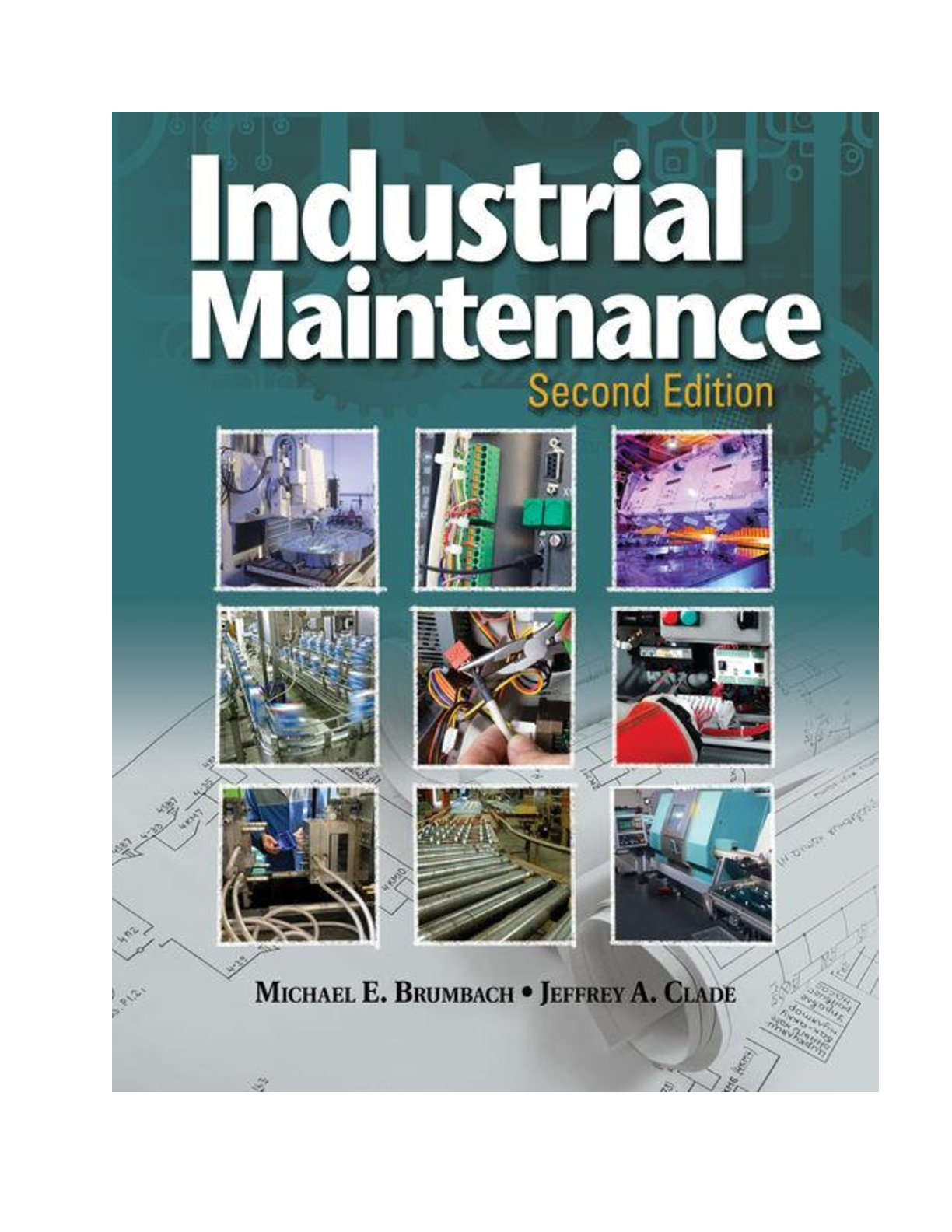
Buy this document to get the full access instantly
Instant Download Access after purchase
Buy NowInstant download
We Accept:

Reviews( 0 )
$20.00
Can't find what you want? Try our AI powered Search
Document information
Connected school, study & course
About the document
Uploaded On
Oct 07, 2021
Number of pages
736
Written in
All
Additional information
This document has been written for:
Uploaded
Oct 07, 2021
Downloads
1
Views
364


